- DIVERTISSEMENT
- MOBILITÉ & MOTEUR
- AUTRES ACTUS
- ARTS MARTIAUX
- KICK BOXING
- AUTO DEFENSE
- PROGRAMME ALIMENTAIRE
- PROGRAMME PRISE DE MASSE
- MODE DE VIE
- PRÉPARATION PHYSIQUE
- RÉCUPÉRATION
- CONSOLES & PC
- RÉALITÉ VIRTUELLE
- INFORMATIQUE
- TV & SON
- SANTÉ & SPORT
- MANGAS & ANIMÉS
- CINEMA & SERIES
- ARCHÉOLOGIE
- PALÉONTOLOGIE
- ENVIRONNEMENT

Fernand de Magellan : biographie, voyages, découvertes, ce qu'il faut savoir sur l'explorateur
Fernand de Magellan était un navigateur et explorateur Portugais de l’époque des Grandes découvertes. Son expédition fut la première à traverser l’océan Pacifique et à faire le tour du monde dans sa quête d’une route maritime vers l’Asie. Les origines du navigateur sont incertaines, il serait issu d’une famille de petite noblesse portugaise. On ne sait presque rien de son enfance, plusieurs localités se revendiquent comme étant celle de sa naissance. Il fut sans doute page de la reine Éléonor de Viseu, à la cour de Lisbonne, avant de prendre la mer.

Biographie :
Découvrir notre dernier podcast
Naissance : Vers 1480 au Portugal
Mort : 27 avril 1521 aux Philippines
Le début d'une longue carrière
En 1505, le navigateur s’engage dans la flotte de Francisco de Almeida , le premier vice-roi de l’Inde, dans le cadre d’une mission ordonnée par le roi Manuel 1er visant à détruire le monopole maritime des musulmans en Afrique et en Inde. Ainsi il participe à plusieurs expéditions sur la côte orientale africaine et indienne, ainsi qu’à la conquête de la route des épices par les portugais.
Le 11 septembre 1509, à Malacca (le plus ancien port de Malaisie), un guet-apens attend l’équipage, il s’en échappe et ramène de cette expédition Henrique, un esclave qui deviendra son fidèle compagnon. Pendant son voyage, il rencontre également Francisco Serrão, qui lui doit sa vie, et avec qui il se lie d’une amitié solide.
Le navigateur participe à la prise de Malacca en 1511, sous le commandement d’ Afonso de Albuquerque , cette dernière ayant permis l’ouverture du chemin des épices, vers les Moluques (archipel à l’est de l’Indonésie), où Serrão s’établit.
Les deux amis correspondent par courrier, notamment sur l’exploitation du giroflier, avant que Magellan ne quitte la région en 1512 pour rejoindre le Portugal, où il pourra mûrir son projet de voyage vers les Moluques. Il rencontre le cosmographe Rui Faleiro qui devient son associé, et avec qui il étudie la faisabilité d’un trajet permettant de contourner l’Amérique par l’Ouest, exploitant un passage au sud du Brésil.
En début 1513, le navigateur est envoyé combattre au Maroc à Azemmour, où il est blessé au genou, le laissant boiteux jusqu’à la fin de ses jours. Accusé de commerce illégal avec les Maures (une population berbère d’Afrique du nord), il tente de se défendre auprès de son roi Manuel 1er, qui le reçoit mal et refuse de réévaluer sa pension, malgré l’abandon des accusations de malversation.
Le début d'un projet ambitieux
Il décide de ne pas faire part de son projet d’expédition à la Couronne, qui bénéficiait déjà du commerce des clous de girofle des Moluques et de la muscade de Banda, et décide en compagnie de Faleiro, d’aller offrir leur service au roi d’Espagne , Charles 1er (le futur Charles Quint ). L’explorateur et son associé y élaborent pour la première fois, un itinéraire maritime qui utiliserait la rotondité de la Terre .
En 1517, ils arrivent à Séville, où Magellan prépare pendant près de deux ans son expédition. Il se place sous la protection de Diogo Barbosa, un portugais passé au service de l’Espagne. Il épouse sa fille, Beatriz avec qui il donne naissance à deux enfants, le premier décède très jeune, le deuxième, mort-né. En mars 1518, Charles 1er nomme les deux associés capitaines, puis commandeurs de l’ordre de Santiago.
Le grand départ
Le 20 septembre 1519, le navigateur lève l’ancre depuis le port de Séville (Sanlucar de Barrameda). Son expédition, constituée de cinq navires et environ 265 hommes, est essentiellement financée par la Couronne. Un membre italien de l’expédition , Antonio Pigafetta, tient un journal de voyage, la principale source d’information concernant ce voyage. Le Trinidad est commandé par Magellan , le San Antonio par Juan de Cartagena, la Concepción par Gaspar de Quesada, le Santiago par Juan Serrano, et enfin, le Victoria, commandée par Luis de Mendoza. Chacun des équipage était constitué d’hommes de nationalités diverses; principalement des Espagnols , des Portugais , mais aussi des Italiens , des Grecs et des Français .
Une semaine plus tard, ils atteignent les Canaries et poursuivent en longeant la côte d’Afrique et en traversant l’ Atlantique où l’équipage doit faire face à des conditions météorologiques difficiles. Fin novembre, l’équipage aperçoit la côte brésilienne.
Deux semaines plus tard, la flotte pénètre dans la baie de Rio , deux semaines supplémentaires pour atteindre le Rio de la Plata. Néanmoins, le passage vers l’Ouest étudié en amont reste introuvable, ils n’auront d’autre choix que d’hiverner en Patagonie . Le 31 mars 1520, alors que la flotte a trouvé refuge au port de San Julián, une mutinerie éclate.
Trois équipages, sous le commandement de Cartagena, Mendoza et Quesada se soulèvent, emplis de toute concernant l’existence du dit passage, et craignant pour leur survie . Mais Magellan et les membres de l’équipage qui lui sont restés fidèles reprennent le dessus. Mendoza est égorgé, Quesada décapité, et le 24 août, Cartagena est abandonné sur un littoral désert. Les autres mutins se verront amnistiés, mais certains subiront la torture de l’estrapade.
Le voyage continue
Le 18 octobre, quatre navires reprennent la route du passage vers l’Ouest, le cinquième ( Santiago ) s’étant échoué pendant une mission de reconnaissance. Trois jours plus tard, le navigateur atteint enfin l’entrée. La traversée dure 27 jours, mais seulement trois navires arrivent au bout de ce détroit. En effet, au milieu du trajet, le San Antonio connaît une mutinerie, il rebrousse chemin et retourne vers Séville.
L’ expédition continue sa route sur l’immensité du Pacifique (qu’il nomme ainsi de part le calme qui règne sur ces eaux) pendant presque quatre mois, pendant lesquels l’équipage souffre du manque de vivres, sans terre sur laquelle accoster et se réapprovisionner .
Le scorbut et le béribéri attaquent l’équipage , mais ne feront que neuf morts. L’on suppose que la consommation de céleri sauvage récolté pendant la traversée du détroit aurait été salvatrice. Mais le 6 mars 1521, l’explorateur et son équipage parviennent enfin à accoster sur l’ïle de Guam (constituant une partie de l’archipel des Mariannes) où ils pourront se ravitailler malgré un pillage des indigènes locaux. Antonio Pigafetta renomme ces terres «les îles des Voleurs ».
Direction les Philippines
La flotte met le cap sur les Philippines où elle accoste le 17 mars, où elle sera bien accueillie par les habitants. Magellan entreprend une mission de conversion au christianisme, le roi Humabon de l’île de Cebu accepte et se voit lui ainsi que son peuple, recevoir le baptême. Néanmoins, le roi Lapu-Lapu de l’île de Mactan refuse de se soumettre aux Européens.
La fin du voyage
Ainsi éclate la bataille de Mactan le 27 avril 1521, pendant laquelle Magellan meurt au combat, ainsi que six de ses compagnons. Il reçoit une flèche empoisonnée dont le venin est si puissant qu’il entraîne la mort de façon immédiate. La défaite ne s’arrête pas ici, puisque le roi Cebu tend une embuscade au retour de ses compagnons, 26 marins périssent, les autres parviennent à s’enfuir.
Les rescapés abandonnent un navire , faute d’hommes pour le manœuvrer, et les autres atteignent les Moluques 6 novembre 1521. Le Trinidad tente un retour par le Pacifique, mais l’état du navire nécessitant d’importants réparation et finit par se faire assaillir et ses hommes capturés par les Portugais . Le basque Juan Sebastián Elcano, ancien mutin, impose son autorité sur le Victoria , et poursuit sa route à travers l’océan indien et le cap de Bonne-Espérance pour rejoindre l’Espagne le 6 septembre 1522.
Environ 16 hommes débarquèrent de ce périple et 12 faits prisonniers par les portugais au Cap Vert reviendront quelques semaines plus tard.
Le Victoria serait donc le premier navire ayant effectué le tour du globe.
À lire aussi
Christophe Colomb : sa biographie, ses voyages, 1492, tout savoir sur l'explorateur
James Cook : Biographie, voyages, découvertes, ce qu'il faut savoir sur l'explorateur
Vasco de Gama : sa biographie, ses voyages, tout savoir sur l'explorateur

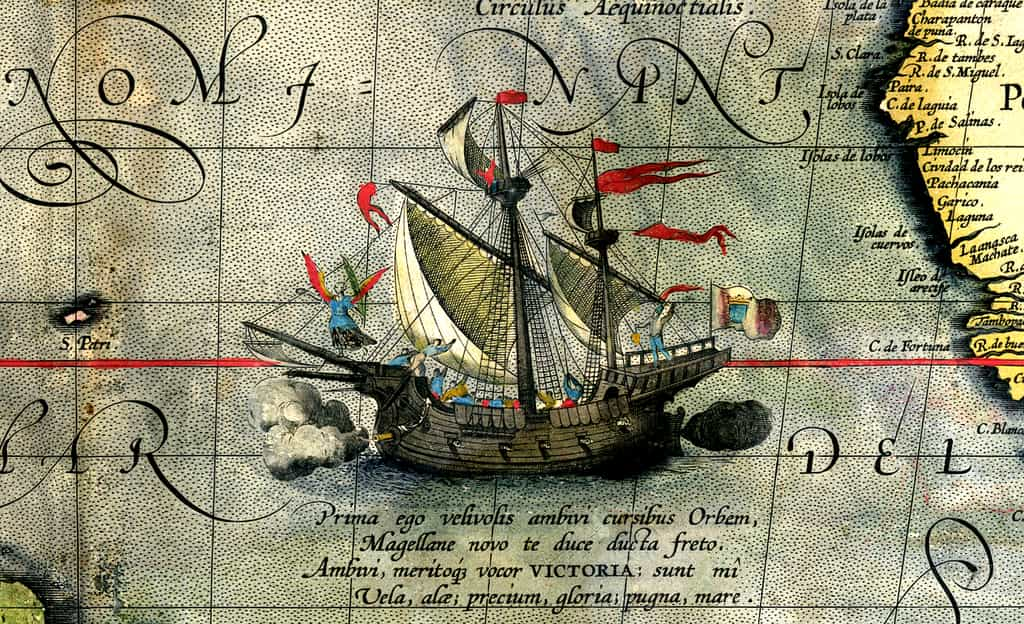
Quel fut le voyage de Magellan ?
question réponse
au sommaire
L'objectif initial du voyage de Magellan n'est pas de faire le tour du monde mais de rejoindre les îles Moluques (aujourd'hui l'Indonésie) par l'ouest pour prolonger le chemin des épices. Financée par l'Espagne, l'expédition comprend cinq navires et 237 hommes.
La flotte quitte Séville le 10 août 1519 puis fait escale à Sanlúcar de Barrameda, d'où elle reprend la mer le 20 septembre. Magellan met le cap au sud-ouest, fait escale aux Canaries , puis longe la côte est de l'Amérique du Sud. Le 13 décembre 1519, la flotte jette l'ancre dans la baie connue aujourd'hui sous le nom de Rio de Janeiro, puis continue vers le sud pour contourner le continent. Après avoir réprimé une mutinerie en mars 1520, Magellan parvient au détroit qui porte porte son nom. Il traverse alors le Pacifique pendant trois mois et 20 jours et arrive aux Philippines en mars 1521.

La mort de Magellan pendant l’expédition
Magellan voyage dans les Philippines , notamment dans l'île d'Homonhon puis à Limasawa et Cebu. Une expédition visant à convertir le roi de l'île de Mactan, Lapu-Lapu, se solde par la mort de Magellan, le 27 avril 1521, tué par une flèche empoisonnée.
Juan Sebastián Elcano prend le commandement. Il gagne Palawan (Philippines) puis arrive à Brunei en juillet 1521. Après quatre mois de navigation, la flotte atteint les îles Moluques le 8 novembre 1521, où elle fait le plein d'épices. Le 21 décembre 1521, le dernier navire en état, la Victoria, quitte Tidore, traverse l'océan Indien, puis franchit le cap de Bonne Espérance. Les 18 rescapés atteignent Sanlúcar de Barrameda le 6 septembre 1522.
La deuxième circumnavigation n'est réalisée qu'en 1558 par l'anglais Francis Drake Drake . Le détroit de Magellan, particulièrement dangereux, ne sera presque pas emprunté.

Époque moderne
Quels sont les plus grands rois de la Renaissance ?
• 22/04/2014

Bougainville, premier navigateur français autour du monde
• 30/08/2018

Actualité de l'emploi
Bac +5 : sciences, les secteurs d'emplois de demain
• 30/01/2020

Quel fut l'itinéraire du voyage de Jacques Cartier ?
• 09/05/2014
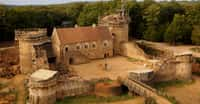
Guédelon : renaissance d'un château médiéval
• 29/07/2019

Philosophie
Sciences, sectes et religion
• 30/01/2003

Tour des sciences #2 : les étudiants vous invitent
• 06/03/2018
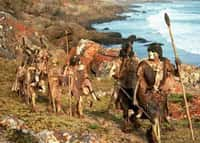
Histoire de l'homme : le tour du monde en deux millions d'années
• 07/02/2006
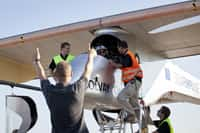
Aéronautique
Solar Impulse se prépare pour le tour du monde
• 08/07/2011

Solar Impulse : un tour du monde grâce à l'énergie solaire
• 20/01/2015
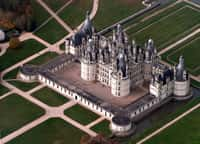
Quels sont les plus célèbres châteaux de la Renaissance ?
• 21/04/2014
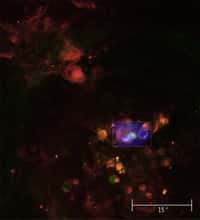
Les super-bulles des Nuages de Magellan
• 06/09/2007
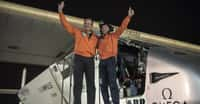
Développement durable
Solar Impulse boucle son tour du monde : André Borschberg nous raconte
• 26/07/2016

Révélation sur les Nuages de Magellan : ils ne seraient pas des satellites de la Voie Lactée !
• 20/09/2007

Livre : la renaissance du temps, par Lee Smolin
• 12/06/2014
La sélection de la

Météorologie
Phénomène météo extraordinaire : les mystérieuses pluies gélatineuses

Réchauffement climatique
Cette réaction chimique est à la base des puits de carbone dans les sols

7 infographies révélatrices du climat en Europe en 2023 qui ont surpris les climatologues

Environnement
Quels loisirs pour apprendre l’écologie aux enfants ?

Crise écologique
Jour de la Terre : cinq héros de notre Planète que vous ne connaissiez pas

7 documentaires sur l'environnement qu’il faut avoir vu pour tout comprendre

D’où vient le nom de la Terre ?

Biodiversité
80 % des Français jugent cruciale la préservation de la biodiversité et le gouvernement devrait les écouter
Transmettre la culture
est le plus vieux métier du monde
Inscrivez-vous à la lettre d'information La quotidienne pour recevoir toutes nos dernières Actualités une fois par jour.
À voir aussi
gps 300 magellan
manchots de magellan
nuage de magellan
magellan biographie
petit nuage de magellan
ti voyage 200
voyage en islande
voyage lunaire
voyage espace
voyage futur
Renaissance
Voyage de Magellan
Philippines
Circumnavigation
Juan Sebastián Elcano
Détroit de Magellan
Tour du monde
- History Classics
- Your Profile
- Find History on Facebook (Opens in a new window)
- Find History on Twitter (Opens in a new window)
- Find History on YouTube (Opens in a new window)
- Find History on Instagram (Opens in a new window)
- Find History on TikTok (Opens in a new window)
- This Day In History
- History Podcasts
- History Vault
Ferdinand Magellan
By: History.com Editors
Updated: October 4, 2023 | Original: October 29, 2009

In search of fame and fortune, Portuguese explorer Ferdinand Magellan (c. 1480-1521) set out from Spain in 1519 with a fleet of five ships to discover a western sea route to the Spice Islands. En route he discovered what is now known as the Strait of Magellan and became the first European to cross the Pacific Ocean. The voyage was long and dangerous, and only one ship returned home three years later. Although it was laden with valuable spices from the East, only 18 of the fleet’s original crew of 270 returned with the ship. Magellan himself was killed in battle on the voyage, but his ambitious expedition proved that the globe could be circled by sea and that the world was much larger than had previously been imagined.
Ferdinand Magellan’s Early Years
Ferdinand Magellan (c. 1480–1521) was born in Sabrosa, Portugal, to a family of minor Portuguese nobility. At age 12 Ferdinand Magellan ( Fernão de Magalhães in Portuguese and Fernando de Magallanes in Spanish) and his brother Diogo traveled to Lisbon to serve as pages at Queen Leonora’s court. While at the court Magellan was exposed to stories of the great Portuguese and Spanish rivalry for sea exploration and dominance over the spice trade in the East Indies, especially the Spice Islands, or Moluccas, in modern Indonesia. Intrigued by the promise of fame and riches, Magellan developed an interest in maritime discovery in those early years.
Did you know? Clove was the most valuable spice in Europe during Magellan's day. It was used to flavor food, but Europeans also believed that its essence could improve vision, its powder could relieve fevers and that it could enhance intercourse when mixed with milk.
In 1505, Magellan and his brother were assigned to a Portuguese fleet headed for India. Over the next seven years, Magellan participated in several expeditions in India, Southeast Asia, and Africa and was wounded in several battles. In 1513 he joined the enormous 500-ship, 15,000-soldier force sent by King Manuel to Morocco to challenge the Moroccan governor who refused to pay its yearly tribute to the Portuguese empire. The Portuguese easily overwhelmed the Moroccan forces, and Magellan stayed on in Morocco. While there he was seriously wounded in a skirmish, which left him with a limp for the rest of his life.
Magellan: From Portugal to Spain
In the 15th century, spices were at the epicenter of the world economy, much like oil is today. Highly valued for flavoring and preserving food as well as masking the taste of meat gone bad, spices like cinnamon, clove, nutmeg and especially black pepper were extremely valuable. Since spices could not be cultivated in cold and arid Europe, no effort was spared to discover the quickest sea route to the Spice Islands. Portugal and Spain led the competition for early control over this critical commodity. Europeans had reached the Spice Islands by sailing east, but none had yet to sail west from Europe to reach the other side of the globe. Magellan was determined to be the first to do so.
By now an experienced seaman, Magellan approached King Manuel of Portugal to seek his support for a westward voyage to the Spice Islands. The king refused his petition repeatedly. In 1517, a frustrated Magellan renounced his Portuguese nationality and relocated to Spain to seek royal support for his venture.
When Magellan arrived in Seville in October 1517, he had no connections and spoke little Spanish. He soon met another transplanted Portuguese named Diogo Barbosa, and within a year he had married Barbosa’s daughter Beatriz, who gave birth to their son Rodrigo a year later. The well-connected Barbosa family introduced Magellan to officers responsible for Spain’s maritime exploration, and soon Magellan secured an appointment to meet the king of Spain.
The grandson of King Ferdinand and Queen Isabella, who had funded Christopher Columbus ’s expedition to the New World in 1492, received Magellan’s petition with the same favor shown by his grandparents. Just 18 years old at the time, King Charles I granted his support to Magellan, who in turn promised the young king that his westward sea voyage would bring immeasurable riches to Spain.
Strait of Magellan
On August 10, 1519 Magellan bade farewell to his wife and young son, neither of whom he would ever see again, and the Armada De Moluccas set sail. Magellan commanded the lead ship Trinidad and was accompanied by four other ships: the San Antonio , the Conception , the Victoria and the Santiago . The expedition would prove long and arduous, and only one ship, the Victoria , would return three years later across the Pacific, carrying a mere 18 of the fleet’s original crew of 270.
In September 1519 Magellan’s fleet sailed from Sanlúcar de Barrameda, Spain, and crossed the Atlantic Ocean, which was then known simply as the Ocean Sea. The fleet reached South America a little more than one month later. There the ships sailed southward, hugging the coast in search of the fabled strait that would allow passage through South America. The fleet stopped at Port San Julian where the crew mutinied on Easter Day in 1520. Magellan quickly quelled the uprising, executing one of the captains and leaving another mutinous captain behind. Meanwhile Magellan had sent the Santiago to explore the route ahead, where it was shipwrecked during a terrible storm. The ship’s crew members were rescued and assigned out among the remaining ships. With those disastrous events behind them, the fleet left Port San Julian five months later when fierce seasonal storms abated.
On October 21, 1520 Magellan finally entered the strait that he had been seeking and that came to bear his name. The voyage through the Strait of Magellan was treacherous and cold, and many sailors continued to mistrust their leader and grumble about the dangers of the journey ahead. In the early days of the navigation of the strait, the crew of the San Antonio forced its captain to desert, and the ship turned and fled across the Atlantic Ocean back to Spain. At this point, only three of the original five ships remained in Magellan’s fleet.
The Magellan Expedition: Circumnavigation the Glob e
After more than a month spent traversing the strait, Magellan’s remaining armada emerged in November 1520 to behold a vast ocean before them. They were the first known Europeans to see the great ocean, which Magellan named Mar Pacifico, the Pacific Ocean, for its apparent peacefulness, a stark contrast to the dangerous waters of the strait from which he had just emerged. In fact, extremely rough waters are not uncommon in the Pacific Ocean, where tsunamis, typhoons and hurricanes have done serious damage to the Pacific Islands and Pacific Rim nations throughout history.
Little was known about the geography beyond South America at that time, and Magellan optimistically estimated that the trip across the Pacific would be rapid. In fact, it took three months for the fleet to make its way slowly across the vast Mar Pacifico. The days dragged on as Magellan’s crew anxiously waited to utter the magic words “Land, ho!” At last, the fleet reached the Pacific island of Guam in March 1521, where they finally replenished their food stores.
Magellan’s fleet then sailed on to the Philippine archipelago landing on the island of Cebu, where Magellan befriended the locals and, struck with a sudden religious zeal, sought to convert them to Christianity . Magellan was now closer than ever to reaching the Spice Islands, but when the Cebu asked for his help in fighting their neighbors on the island of Mactan, Magellan agreed. He assumed he would command a swift victory with his superior European weapons, and against the advice of his men, Magellan himself led the attack. The Mactanese fought fiercely, and Magellan fell when he was shot with a poison arrow. Ferdinand Magellan died on April 27, 1521.
Magellan would never make it to the Spice Islands, but after the loss of yet another of his fleet’s vessels, the two remaining ships finally reached the Moluccas on November 5, 1521. In the end, only the Victoria completed the voyage around the world and arrived back in Seville, Spain, in September 1522 with a heavy cargo of spices but with only 18 men from the original crew, including Italian scholar and explorer Antonio Pigafetta. The journal Pigafaetta kept on the voyage is a key record of what the crew encountered on their journey home.
Impact of Ferdinand Magellan
Seeking riches and personal glory, Magellan’s daring and ambitious voyage around the world provided the Europeans with far more than just spices. Although the trip westward from Europe to the east via the Strait of Magellan had been discovered and mapped, the journey was too long and dangerous to become a practical route to the Spice Islands. Nevertheless, European geographic knowledge was expanded immeasurably by Magellan’s expedition. He found not only a massive ocean, hitherto unknown to Europeans, but he also discovered that the earth was much larger than previously thought. Finally, although it was no longer believed that the earth was flat at this stage in history, Magellan’s circumnavigation of the globe empirically discredited the medieval theory conclusively.
Though Magellan is often credited with the first circumnavigation of the globe, he did so on a technicality: He first made a trip from Europe to present-day Malaysia, eastward via the Indian Ocean, and may have continued further east to the Spice Islands. He then later made his famous westward voyage that brought him to the Philippines. So he did cover the entire terrain, but it was not a strict point A to point A, round-the-world trip, and it was made in two different directions. His enslaved servant Enrique was born in the region, possibly near Malacca or Cebu, and had come to Europe with Magellan by ship. Enrique reached Cebu (and possibly Mallaca) on the expedition’s westward voyage, meaning he may have been the first person to circumnavigate the world in one direction to return to the same starting point.

HISTORY Vault: Columbus the Lost Voyage
Ten years after his 1492 voyage, Columbus, awaiting the gallows on criminal charges in a Caribbean prison, plotted a treacherous final voyage to restore his reputation.

Sign up for Inside History
Get HISTORY’s most fascinating stories delivered to your inbox three times a week.
By submitting your information, you agree to receive emails from HISTORY and A+E Networks. You can opt out at any time. You must be 16 years or older and a resident of the United States.
More details : Privacy Notice | Terms of Use | Contact Us
Voyages de Ferdinand Magellan
Premier voyage, le roi charles i finance le voyage, rio de janeiro, détroit de magellan, atterrissage, philippines, mort au combat, contourner le cap, voyage home, personnages, les références.

Visitez la boutique

Le 27 avril, Magellan et les membres de son équipage ont tenté de maîtriser les indigènes de Mactan par la force, mais dans la bataille qui a suivi, les Européens ont été maîtrisés et Magellan a été tué par Lapulapu, un chef indigène de Mactan.

How Did the Caravel Change the World?
Technology of the age of exploration.
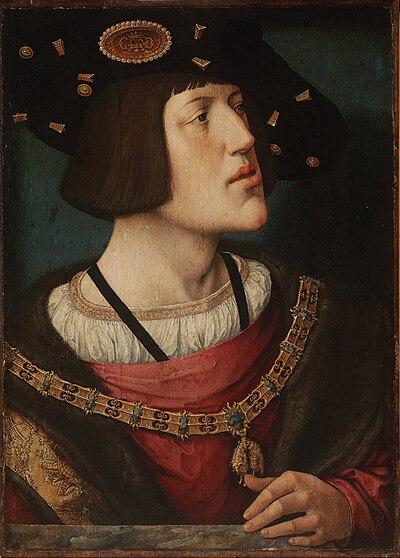
Holy Roman Emperor

Ferdinand Magellan
Portuguese Explorer

Juan Sebastián Elcano
Castilian Explorer

Juan de Cartagena
Spanish Explorer

Francisco de Almeida

Mactan Datu
- The First Voyage Round the World, by Magellan, full text, English translation by Lord Stanley of Alderley, London: Hakluyt, [1874] – six contemporary accounts of his voyage
- Guillemard, Francis Henry Hill (1890), The life of Ferdinand Magellan, and the first circumnavigation of the globe, 1480–1521, G. Philip, retrieved 8 April 2009
- Zweig, Stefan (2007), Conqueror of the Seas – The Story of Magellan, Read Books, ISBN 978-1-4067-6006-4
Magellan, Elcano and Their Voyage Around the World
Discover the details of the first circumnavigation of the globe..
By Naval Museum
Museo Naval
We Were The First: Magellan, Elcano, and the Voyage Around the World Naval Museum
The Voyage Around the World In 2019, Spain celebrated 500 years since 5 ships set sail from Seville, heading west in search of a new route to the spices of the east. Around 250 men from at least 9 different countries began the journey, which was funded by the Spanish monarch King Charles I. It was a journey that would end 3 years later with the arrival of just 1 ship carrying 18 men, having completed the first circumnavigation of the world.
Chart of Juan de la Cosa (1500) by Juan de la Cosa Original Source: Museo Naval Madrid.
The World of Magellan and Elcano
Finding a maritime route to the east was a constant preoccupation in the Middle Ages and Early Modern Period. The decline of the overland trade route called the Silk Road forced European powers to look for new ways to the east. Portugal began crossing the Atlantic and Spain's Catholic Monarchs, Ferdinand II and Isabella I, financed Christopher Columbus' voyage in search of a new route.
Ptolemy's Mappamundi (1472) by Claudio Ptolomeo Original Source: Museo Naval. Madrid. Todos los derechos reservados.
When Columbus set sail for the Indies in 1492, sea voyages were an adventure into the unknown. The discovery of new lands helped improve cartography, which was essential for navigation. Claudius Ptolemy's Geography, an ancient Roman atlas, was hugely influential in this, as it was the first example of using a systematic method to map the world.
The first map to depict the Americas was produced in 1500 by Juan de la Cosa. It represents the limits of European knowledge of this new world by the time Ferdinand Magellan's expedition set sail in 1519.
The Cantino planisphere. The original is in the Biblioteca Estense Universitaria library in Modena (1502-1505) by Anonimuos Original Source: Museo Naval. Madrid. Todos los derechos reservados.
In the east, accounts from merchants and travelers alluded to rich and fertile lands. To the south, Portuguese explorers had provided more specific details of the outline of the African coast. Looking west, the tales of Spanish conquistadors described the recently discovered Americas as a new land full of natural riches.
In 1502, Alberto Cantino's Planisphere, or world map, was the first to depict the meridian designated by the Treaty of Tordesillas. Signed in 1494, the treaty divided the rights to sail to and conquer new lands in the Atlantic Ocean and the New World between the Spanish monarchy and Portugal.
Model of the Victoria (2019) by Francisco Fernández González, Luis Fariña Filgueira, Fernando Sagra Sanz, José Antonio Álvarez Manzanares Original Source: Museo Naval. Madrid. All rights reserved.
Inspiration and Preparation for the Voyage
By that time, Europe had begun to realize that the Americas were a new continent rather than part of Asia, and so continued to send expeditions there. During one of these, Vasco Núñez de Balboa discovered the South Sea (now known as the Pacific Ocean) in 1513. This created new opportunities for navigation on the other side of Panama.
Ratification of the Treaty of Tordesillas (1494) Original Source: Archivo del Museo Naval. Madrid. Todos los derechos reservados.
Spain and Portugal began searching for a passage to this ocean to reach the Indies, while adhering to the boundaries established in the Treaty of Tordesillas. Signed in 1494, this treaty comprised a series of agreements between King Ferdinand II of Aragon and Queen Isabella I of Castile on the one hand, and King John II of Portugal on the other. These established a new line of demarcation between their kingdoms from pole to pole, 370 leagues west of the Cape Verde Islands.
Portrait of Ferdinand Magellan (19th Century) by Spanish anonimous Original Source: Museo Naval. Madrid. Todos los derechos reservados.
Ferdinand Magellan was a Portuguese-born sailor who knew the Portuguese route to Africa and Asia, having sailed in the service of King Manuel I of Portugal for over 20 years. He wanted to begin a journey that would take a new route to the Moluccas (Spice Islands), but the idea did not get far at the Portuguese court. That is how he ended up in Spain, where he was welcomed by the young monarch Charles I, grandchild of Ferdinand and Isabella.
Model of the Victoria (2019) by Francisco Fernández González, Luis Fariña Filgueira, Fernando Sagra Sanz, José Antonio Álvarez Manzanares. Original Source: Museo Naval. Madrid. Todos los derechos reservados.
In 1518, an agreement (the Capitulaciones de Valladolid) was signed between Magellan, his cosmographer Rui Faleiro, and the Spanish monarch to find a new western route to the Spice Islands that avoided the areas under Portuguese control. They had five ships with which to make the journey (the "Trinidad", "San Antonio", "Concepción", "Victoria", and "Santiago"), which the Casa de la Contratación (House of Commerce) supplied with provisions for a planned two-year voyage.
The Voyage (1519–22)
The expedition left Seville on August 10, 1519, arriving in Sanlucár de Barrameda 10 days later to collect the final provisions and equipment. From there, they set sail into the unknown, on a journey that would take three years.
Map of South America (1630) by Gerardis Mercatoris Original Source: Museo Naval. Madrid. Todos los derechos reservados.
The Familiar: From Seville to Río de Solís Leaving Seville, they journeyed south and, at the beginning of October, they headed southwest across the Atlantic Ocean, which was already familiar to the experienced sailors. On December 13, they dropped anchor in Santa Lucia Bay (now Rio de Janeiro), where they picked up food supplies. In January 1520, they reached the mouth of Río de Solís (now Río de la Plata).
Map of America (Siglo XVI) by Diego Gutierrez Original Source: Museo Naval. Madrid.
The Unknown: From the Río de Solís to The South Sea Due to the weather, they decided to stop in Port St. Julian. The "Santiago" was lost on a reconnaissance mission, although the crew and cargo were saved. Discontent was starting to grow among the crew due to the rationing of supplies and not knowing which route to follow. Juan de Cartagena, led a mutiny with the support of the "Victoria" and the "Concepción". Magellan quelled the uprising, killing the captain of the "Victoria" (Luis de Mendoza) and the captain of the "Concepción" (Gaspar de Quesada), and abandoning Juan de Cartagena on an island in Patagonia.
Tierra del Fuego (18th century) by Anónimo Original Source: Museo Naval. Madrid.
On August 24, the expedition set off again, but with one less ship after the "Santiago" crashed into a sandbank. “On the 21st of the said month [October 1520] … we saw an opening like a bay … within this bay we found a strait … and passing this strait we found another small bay, and then we found another strait …” (Francisco Albo). They had finally found the passage. What is now known as the Strait of Magellan allowed them access to a new ocean that they called the Pacific.
Penguin Original Source: Museo Naval. Madrid.
The accounts of Antonio Pigafetta describe the never-before-seen animals they discovered there, such as the penguin, now known as the Magellanic penguin. During this discovery, the "San Antonio" deserted the expedition and turned east, back to Spain.
Model of a rowboat (rocking boat) (19th Century) by Spanish anonimous Original Source: Museo Naval. Madrid. Todos los derechos reservados.
The seas gradually became more difficult to navigate. They crossed open waters that were unknown to them, leading to a shortage in supplies and illness among the crew. The expedition landed on islands such as San Pablo, Guam, and the Caroline Islands, signing treaties of loyalty to the king of Spain and spreading Christianity along the way. Finally, in 1521, they reached the Archipelago of San Lazaro, now the Philippines.
Kris with wavy blade (c. 1840) by Philippine anonimous Original Source: Museo Naval. Madrid. Todos los derechos reservados.
Magellan's Death The commander of the expedition established good relations with the king of Cebu, Rajah Humabon, arousing suspicion in the other local kings. Quarrels broke out, with some in favor of the Spanish and others against, creating a hostile environment. Finally, in 1521, Magellan and 60 men confronted Lapu-Lapu, the king of Mactan. The island's reefs stopped the Spanish artillery boats from landing and they were attacked by 1,500 islanders. Magellan died in the battle.
Primus Circumdedisti Me (2019) by Augusto Ferrer Dalmau Original Source: Museo Naval. Madrid.
Elcano and the Arrival at the Moluccas The early departure from the Philippines led to a reorganization of the remaining crew. They set fire to the "Concepción", which was in poor condition, and the crew were split between the two remaining ships. The "Trinidad" was commanded by Gonzalo Gómez de Espinosa, and Juan Sebastián Elcano became captain of the "Victoria". At last, on November 8, 1521, they caught sight of the Moluccas, landing on Tidore.
Juan Sebastián Elcano (1854) by J. Donon Original Source: Museo Naval. Madrid. Todos los derechos reservados.
After arriving at these islands, they discovered the "Trinidad" was no longer seaworthy. Gómez de Espinosa stayed for a few months to repair the ship and wait for more favorable winds to help them sail east and return via the Americas. Meanwhile, Elcano began the return journey across the Indian Ocean towards Africa, setting course for the Cape of Good Hope, which was under Portuguese control.
The Return of the Victoria from the Moluccas to Seville Following more storms and illnesses, the "Victoria" landed in Cape Verde, in Portuguese territory, in May 1522 to carry out repairs and take on supplies. When the Portuguese discovered their cargo and the origin of the crew, they were forced to abandon the island suddenly, leaving some of the crew on land.
Juan Sebastián Elcano returning to Seville in 1522 (Ca. 1944-45) by Elías Salaverría Inchaurrandieta Original Source: Museo Naval. Madrid. Todos los derechos reservados.
“On the 4th of the said month [September 1522], in the morning, we saw land, and it was Cape St. Vincent, and it was to the northeast of us, and so we changed our course to the southeast …” (Francisco Albo). They had finally returned home. The "Victoria" reached Seville with 18 survivors, 4 days after catching sight of Cape St. Vincent. They had made it possible to carry out commercial trade around the world. They were the first to circumnavigate the globe.
Charles V welcoming back Elcano (1854) by Carlos Mugica y Pérez Original Source: Museo Naval. Madrid. Todos los derechos reservados.
The king summoned Juan Sebastián Elcano to Valladolid, where he gave him a personal report on the mission and requested the rescue of the crew members held prisoner in Cape Verde. The monarch granted him a lifetime income of 500 gold ducats a year—which he never paid him—and a coat of arms featuring a world globe with the inscription, "Primus circumdedisti me (You were the first to circumnavigate me)."
Model of the barquentine Juan Sebastián de Elcano, a training ship for the Royal Spanish Navy (1927–active service) (1982-1987) by José Francisco Arregui Arambarri Original Source: Museo Naval. Madrid. Todos los derechos reservados.
Elcano died four years later, during a new mission to the Moluccas led by García Jofre de Loaísa. The current Spanish navy training ship bears his name in his honor.
Descriptio Maris Pacifici (1589) by Abraham Ortelius Original Source: Museo Naval. Madrid. Todos los derechos reservados.
Legacy: A New World
The importance of the Magellan-Elcano voyage far exceeded the original plans for the expedition.
Universal Chart (1866) by Diego Ribero Original Source: Biblioteca Apostolica Vaticana (Vatican City)
What began as a mission to find a way to the Spice Islands, far from the Portuguese routes, became a successful enterprise for two other reasons: it helped prove the shape of the Earth and showed that the Americas were not part of the Indies, but in fact a whole new continent. It generated numerous economic, geographic, and political changes, and led to the beginnings of globalization.
Organized by the Naval Museum, Madrid Curators: Enrique Martínez Ruiz, Susana García Ramírez, José María Moreno Martín Online adaptation: Blanca Sazatornil, Alicia Suárez. Outreach Department, Naval Museum, Madrid. This exhibition is part of the First Voyage Around the World project.
Chart of Juan de la Cosa: The First Known Map of America
Naval museum, elcano's return (el regreso de elcano), navigational instruments and equipment in the 16th century, scale model ships, masters of the sea, lords of the world, midshipmen: the arrival of science in spain, isaac peral and the invention of the first electric submarine, blas de lezo, the last voyage of the mercedes, la batalla de lepanto.
JEU CONCOURS ! 10 lots à gagner pour les révisions !

Collège > 5eme > Histoire > Le voyage de Magellan
Le voyage de Magellan
- Fiche de cours
Profs en ligne
- Application mobile
Vote en cours...
Vous avez déjà mis une note à ce cours.
Découvrez les autres cours offerts par Maxicours !
Comment as-tu trouvé ce cours ?
Évalue ce cours !
Nous sommes désolés que ce cours ne te soit pas utile
N'hésite pas à nous écrire pour nous faire part de tes suggestions d'amélioration
Puisque tu as trouvé ce cours utile
Je partage à mes amis
La médiane de 6 notes est 13. Cela signifie que :
la majorité des notes est 13.
la somme des 6 notes est égale au produit de 13 par 6.
il y a 3 notes inférieures ou égales à 13 et 3 notes supérieures ou égales à 13.
On a obtenu la série statistique suivante :

Combien vaut la médiane ?
environ 36,9
On a obtenu la série ci-dessous :

Quelle est la médiane de cette série ?
On a relevé les tailles en cm des élèves d’une classe :

Parmi les propositions suivantes, laquelle est vraie ?
La classe modale de cette série est [150 ; 155[.
Le mode de cette série est 150.
Le mode de cette série est 9.
Les notes en français de deux classes littéraires sont données dans le tableau suivant :

Quelle est la note médiane ?
Vous avez obtenu 75% de bonnes réponses !
Recevez l'intégralité des bonnes réponses ainsi que les rappels de cours associés :
Votre adresse e-mail sera exclusivement utilisée pour vous envoyer notre newsletter. Vous pourrez vous désinscrire à tout moment, à travers le lien de désinscription présent dans chaque newsletter. Pour en savoir plus sur la gestion de vos données personnelles et pour exercer vos droits, vous pouvez consulter notre charte .
Une erreur s'est produite, veuillez ré-essayer
Consultez votre boite email, vous y trouverez vos résultats de quiz!

Découvrez le soutien scolaire en ligne avec myMaxicours
Le service propose une plateforme de contenus interactifs, ludiques et variés pour les élèves du CP à la Terminale. Nous proposons des univers adaptés aux tranches d'âge afin de favoriser la concentration, encourager et motiver quel que soit le niveau. Nous souhaitons que chacun se sente bien pour apprendre et progresser en toute sérénité !
Fiches de cours les plus recherchées

Christophe Colomb
Une meilleure représentation du monde
Le château de Chambord
Les deux arts du Moyen âge : l'art roman et l'art gothique
La société féodale
Les châteaux au Moyen âge
Le tympan de Sainte-Foy de Conques
Les civilisations précolombiennes
L'unité brisée de la Chrétienté
La chevalerie au Moyen âge
Accédez gratuitement à
Tout le contenu gratuit pendant 24h !
Exercices corrigés
Espace parents
Quiz interactifs
Podcasts de révisions
Cours en vidéo
Fiches de cours
Merci pour votre inscription
* Votre code d'accès sera envoyé à cette adresse e-mail. En renseignant votre e-mail, vous consentez à ce que vos données à caractère personnel soient traitées par SEJER, sous la marque myMaxicours, afin que SEJER puisse vous donner accès au service de soutien scolaire pendant 24h. Pour en savoir plus sur la gestion de vos données personnelles et pour exercer vos droits, vous pouvez consulter notre charte .

The Ages of Exploration
Ferdinand magellan, age of discovery.
Quick Facts:
He led the first circumnavigation of the world, and is considered the first European to cross the Pacific Ocean
Name : Ferdinand Magellan [fur-dn-and] [muh-jel-uhn]
Birth/Death : 1480-1521
Nationality : Portuguese
Birthplace : Porto or Sabrosa, Portugal
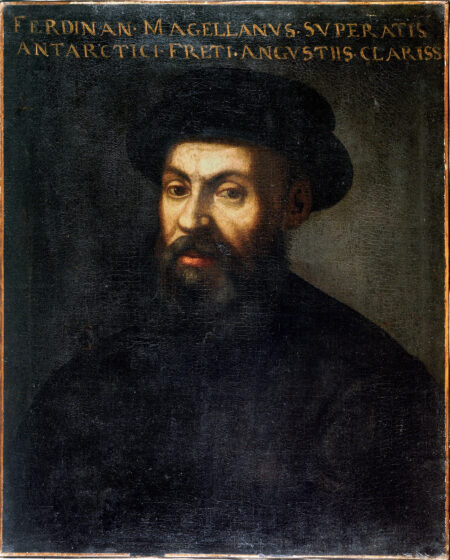
Portrait of Ferdinand Magellan
Half-length portrait of Ferdinand Magellan (circa 1580-1521), first European to circle the globe. The Mariners Museum 1949.0619.000001
Introduction Ferdinand Magellan is known for circumnavigating – sailing around – the world. From Spain he sailed around South America, discovering the Strait of Magellan, and across the Pacific. Though he was killed in the Philippines, his ship the Victoria continued westward to Spain, accomplishing the first circumnavigation of the globe. But in some cases, his journey was filled with more than he would bargain for. Magellan’s story is filled with war, storms, mutiny, and hostile native encounters.
Biography Early Life Ferdinand Magellan was born in 1480 in Portugal; the exact city is unknown. Many believe it was either Porto or Sabrosa. Ferdinand Magellan is the English version of his name. In Portuguese, his name is Fernão de Magalhães. He came from a noble family. His father was Rui de Magalhães and Alda de Mesquita. Young Magellan was a page in the royal court for the queen of Portugal. Here, he would learn helpful skills such as hunting, fighting, and he would have learned about the stars. 1 His father often traveled to a town called Oporto (also spelled Porto). The harbor here was crowded with shipping and seafaring travelers with tales of adventure. It is possible that Oporto is where Magellan found a love for the sea and exploration. 2 But Ferdinand Magellan was not always an explorer. He began his career as a soldier in the Portuguese navy. He left Portugal in 1505 and sailed to India under the command of Francisco de Almeida. They were sent by King Manuel I to break Muslim sea power in India and Africa. 3 Magellan left Lisbon on March 25, 1505. He would travel and fight in several battles over the next few years.
In 1506, Magellan traveled to the East Indies (modern day Indonesia) and joined expeditions to Spice Islands (also called the Molucca Islands). In February 1509, he took part in the naval Battle of Diu, which marked the decline of Ottoman (modern day Turkey) influence in the area. The Portuguese now had dominance over most of the Indian Ocean. He returned to Lisbon in 1512. A year later, he went to Morocco in Northern Africa where he fought in another battle. During the battle, Magellan received a serious wound that would cause him to walk with a limp for the rest of his life. 4 Also while in Morocco, Magellan was accused of stealing. He was proven innocent, but the incident ruined his reputation with the Portuguese king. Magellan wanted to command a voyage to the Spice Islands. He believed he could reach them by sailing west. When he returned to Portugal, he petitioned King Manuel I three times to let him go. The King refused each time. Ferdinand Magellan then went to King Charles I of Spain. The Spanish King agreed to sponsor what would become Magellan’s great voyage around the world.
Voyages Principal Voyage By the end of October 1517, Magellan was in Seville, becoming a Spanish citizen. King Charles I funded Magellan and he set sail September 20, 1519 with a fleet of five ships and roughly 200 men. The five ships were: the Trinidad , captained by Magellan; San Antonio , captained by Juan de Cartagena; Concepción , captained by Gaspar de Quesada; Victoria , captained by Luis de Mendoza; and the Santiago , captained by Juan Serrano. They stopped at the Canary Islands to pick up some supplies, and then continued into the Atlantic Ocean. Magellan received a letter that the Spanish officers planned to kill him after leaving the Canaries. Magellan remained on guard for his life throughout much of the trip. They sailed for several weeks, and by November 20, they crossed the equator into the southern hemisphere. 5 In December, they stopped at Guanabara Bay in southeastern Brazil to resupply once again.
Magellan’s fleet continued on down the coast of South America. He was searching for a passage that connected one ocean to the other. As their journey went on, life at sea became difficult. Food and water became rationed, and the crew was not happy. On April 1, 1520, while at Port St. Julian, the three captains Cartagena, Mendoza, and Quesada called their crews to mutiny. 6 The mutiny was crushed by Magellan. Mendoza had been killed during the mutiny. Quesada and Cartagena were found guilty of murder and treason. Quesada was beheaded for his crime, while Cartagena was left marooned – or stranded – on land when the fleet left. 7 The fleet traveled onward. While near Santa Cruz, the Santiago wrecked while on a scouting mission. They continued south and on October 21, 1520 he finally found the passage they were searching for. Shortly after entering the passage, the San Antonio deserted the mission. On November 8, 1520 the Trinidad , Concepción , and Victoria reached the “Sea of the South.” 8 Today we know it as the Pacific Ocean. This passage at the tip of South America that Ferdinand Magellan had found would later be renamed the Strait of Magellan.
Subsequent Voyages Ferdinand Magellan had problems along the way, but he had finally reached the Pacific Ocean. Once through the strait, Magellan continued northward up the coast of Chile. In March the reached the island we now know as Guam. Here, they found and ate fresh food for the first time in 99 days. 9 Having found a route through South America, Magellan was still determined to reach the Spice Islands. He and his fleet continued west. Along their course, they noticed a constant flow of wind. This air provided steady winds to their back which was very helpful to their sailing. Magellan and his crew had unknowingly discovered “trade winds.” The name would come from the important role they would later play in transoceanic trade. Their journey continued until they reached the Philippines in March of 1521. By this point, Magellan had endured a somewhat difficult yet successful journey. But his luck would not last much longer.
Later Years and Death Throughout the Philippine Islands, Magellan and his men regularly interacted with the natives. At Cebú, The native chief, his wife, and several of the natives were baptized and converted to Christianity. Because of this, Magellan thought he could convince other native tribes to convert. But not all interactions with the natives were friendly. Chief Datu Lapu Lapu of the Mactan Island rejected conversion. So Magellan took a group of about 60 men to attack Mactan. The Mactan’s had about 1500 men. On April 27, 1521, Ferdinand Magellan was killed during battle on the Philippine Islands. The Trinidad and Victoria soon made it to the Spice Islands. The Trinidad needed much repair. So the Victoria , captained by Juan Sebastian Elcano continued on.On December 21,1521, the Victoria sailed across the Indian Ocean to Spain. September 6, 1522, they arrived with only 18 men at Sanlúcar de Barrameda on the coast of Spain.
Legacy Although he died in the Philippines, we recognize Ferdinand Magellan as the first European to circumnavigate the globe. He fearlessly commanded a fleet of ships, one that completed the journey in his name and honor. Several discoveries were made along the way. The Strait of Magellan, off the southern coast of South America, became an important navigational route. His discovery of the trade winds ranks among his most useful and major findings. 10 The expedition gave Europeans a much better understanding of the extent of the Earth’s size. Much of what we know of Magellan’s journey came from Antonio Pigafetta. A crew member of the famed voyage, Pigafetta kept a first hand account of the voyage. He and his story survived the journey around the globe, and his account later was translated. Magellan had set out with a goal to discover a Western sea route to the Spice Islands. What he helped prove, however, is that the world is indeed round, and much bigger than Europeans previously imagined.
- Mervyn D. Kaufman, Ferdinand Magellan (Mankato: Capstone Press, 2004), 6.
- Frederick Albion Ober, Ferdinand Magellan (New York: Harper & Brothers Publishers, 1907), 5 – 6.
- Britannica Educational Publishing, The Britannica Guide to Explorers and Explorations That Changed the Modern World (New York: Britannica Educational Publishing, 2010), 77.
- Michael Burgan, Magellan: Ferdinand Magellan and the First Trip Around the World (Mankato: Capstone Publishers, 2001), 11.
- Nancy Smiler Levinson, Magellan and the First Voyage Around the World (New York: Clarion Books, 2001), 55.
- Ober, Ferdinand Magellan , 143 – 148.
- Ober, Ferdinand Magellan , 151 – 153.
- Britannica Educational Publishing, The Britannica Guide , 81.
- Laurence Bergreen, Magellan: Over the Edge of the World (New York: Roaring Brook Press, 2017), 89.
Bibliography
Bergreen, Laurence. Magellan: Over the Edge of the World . New York: Roaring Brook Press, 2017.
Britannica Educational Publishing. The Britannica Guide to Explorers and Explorations That Changed the Modern World . New York: Britannica Educational Publishing, 2010.
Burgan, Michael. Magellan: Ferdinand Magellan and the First Trip Around the World . Mankato: Capstone Publishers, 2001.
Kaufman, Mervyn D. Ferdinand Magellan . Mankato: Capstone Press, 2004.
Levinson, Nancy Smiler. Magellan and the First Voyage Around the World . New York: Clarion Books, 2001.
Ober, Frederick Albion. Ferdinand Magellan . New York: Harper & Brothers Publishers, 1907.

- Original "EXPLORATION through the AGES" site
- The Mariners' Educational Programs

Découvrir, comprendre, créer, partager
- Vers de nouveaux horizons (15 e - 16 e siècles)
La grande boucle de Magellan
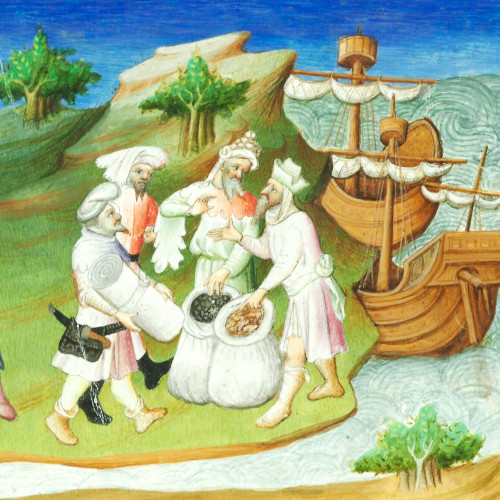
Contourner l'Afrique

L’amiral de la mer océane

La caravelle, vedette en haute mer

De nouveaux instruments de navigation
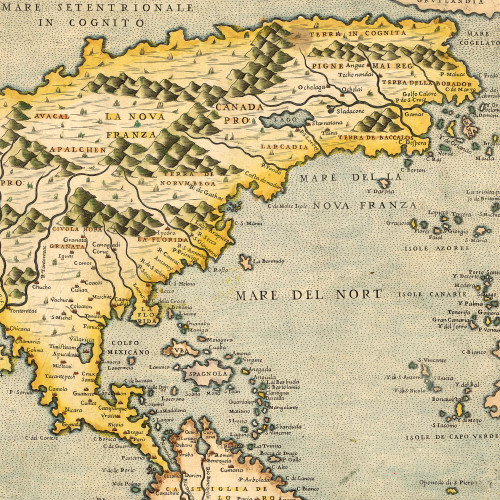
Le baptême de l’Amérique
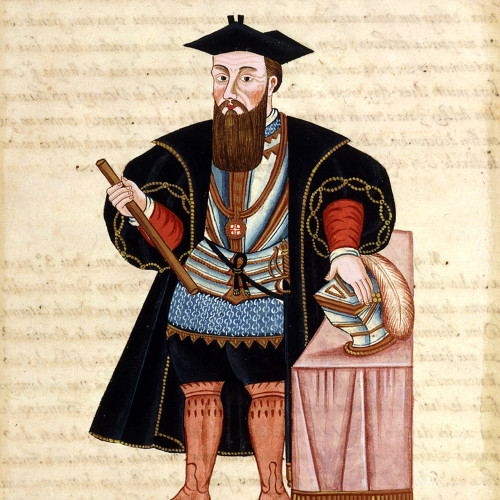
Le périple de Vasco de Gama
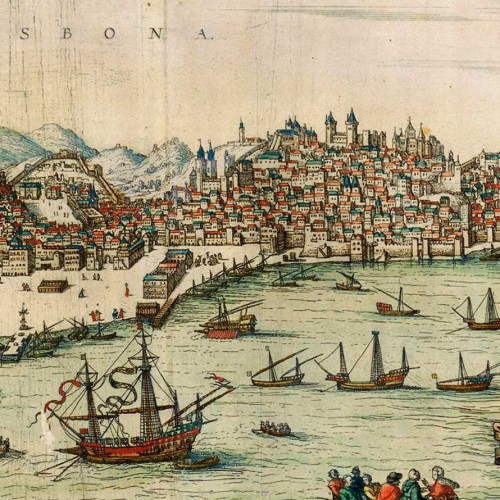
Le règne du secret

Les partages du monde
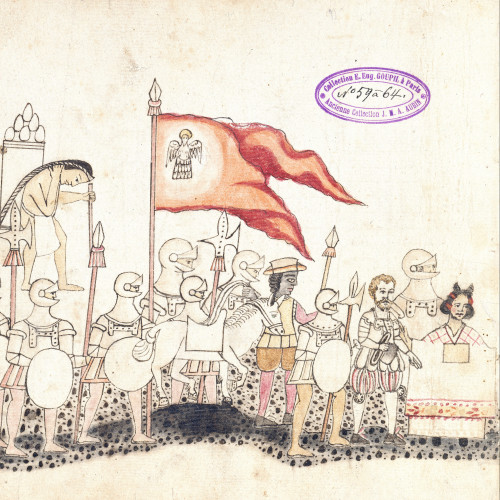
L’Amérique de la Conquista

Visions du Nouveau monde

Le passage du Nord-Ouest
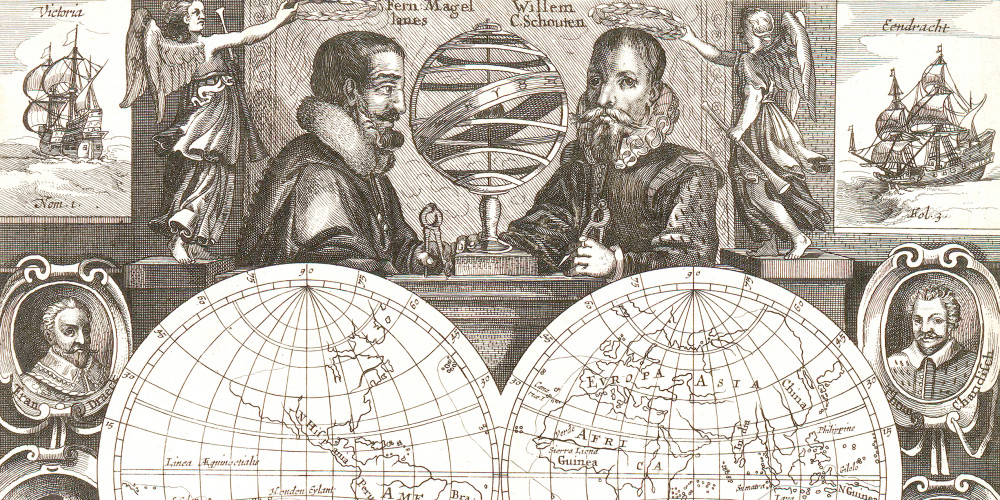
© Bibliothèque nationale de France
Portraits de Magellan et de Schouten
Fernao de Magalhaens avait des comptes à régler avec la société. Bien que nanti d’une grande expérience de navigateur acquise aux Indes orientales pour le compte du Portugal, un désaccord avec Albuquerque l’avait ramené à Lisbonne où il ne goûtait guère les charmes de la retraite. D’une expédition punitive contre les Maures au Maroc, en 1513, il était rentré blessé et révoqué pour avoir regagné son pays sans autorisation. Il était clair que le roi ne lui accorderait plus sa confiance. Son projet de découvrir un passage permettant de rejoindre les Moluques au-delà de l’Amérique ne recevant aucun appui officiel, il quitta son pays pour passer au service de Charles I er d’Espagne, futur Charles Quint. En 1517, il devenait citoyen espagnol sous le nom de Fernando de Magellanes.
À ses côtés se trouvait un astronome portugais aigri par l’infortune, Ruy Faleiro. Il prétendait avoir résolu le problème de la détermination des longitudes et défendait avec acharnement l’idée d’un passage vers l’Asie à travers l’Amérique du Sud. Devant le conseil des ministres, les deux hommes produisirent un globe terrestre plaçant les Moluques dans la partie du monde que le traité de Tordesillas avait dévolue à l’Espagne et exprimèrent leur conviction de pouvoir contourner l’Amérique qui, subodoraient-ils, devait se terminer en pointe, comme l’Afrique.
Une « autre mer jamais vue » ?
L’existence d’une « autre mer jamais vue », au-delà du nouveau continent, avait été constatée en 1513 par Vasco Nunez de Balboa dans l’isthme du Darien qu’emprunte aujourd’hui le canal de Panama. Informé par les indigènes, il avait choisi l’endroit le plus étroit, 150 kilomètres environ, pour aller chercher la confirmation de l’existence de cet océan dont on ne savait pas encore s’il serait « pacifique ». Le parcours fut particulièrement difficile, sans vivres, à travers une forêt vierge au sol spongieux grouillant de serpents et d’insectes, hantée de crocodiles et de sangsues, en suivant des cours d’eau coupés de rapides et de hauts-fonds. Enfin la mer était apparue, visible du haut d’une montagne et Balboa avait présidé l’action de grâces. Il avait gravé le nom de Ferdinand dans l’écorce des arbres, et le notaire avait rédigé le procès-verbal, contresigné par soixante-sept Espagnols présents, dont les noms passèrent à la postérité. L’un d’eux était Francisco Pizarro, le futur conquérant du Pérou. Ne sachant pas écrire, il signa d’une croix. Quatre jours plus tard, Balboa avait bu une gorgée de l’eau de l’océan et avait gravé avec son poignard des croix sur trois palétuviers, en l’honneur de la Sainte-Trinité. Armé de pied en cap, il avait fait quelques pas dans l’eau où, l’épée nue brandie d’une main et tenant de l’autre la bannière où étaient peints la Madone et l’Enfant Jésus, les armes de Castille et d’Aragon, il avait pris possession de la mer des Indes au nom du roi d’Espagne.
Il restait à trouver le passage qui permettrait aux navires d’y pénétrer. Tous les navigateurs le cherchaient, au nord – tels les frères Gaspar et Miguel Corte Real pour le compte du Portugal, ou encore Jean Cabot, envoyé par les marchands de Bristol – comme au sud. Il était en outre urgent de dénouer la question de la position des Moluques qui alimentait un conflit avec le Portugal. Aussi, en mars 1518, Magellan reçut-il l’agrément de l’Espagne pour son voyage, au grand dépit de ses anciens employeurs.

Mappemonde de Sébastien Cabot
Sébastien Cabot, originaire de Venise et fils du navigateur Jean Cabot (qui explora le Labrador et Terre-Neuve), navigua successivement pour le compte de Henri VIII d’Angleterre et pour l’Espagne, en tant que « pilote-major » de sa majesté l’empereur Charles Quint. Il explora l’Amérique du Sud et décrivit le Rio de la Platà, alors qu’il recherchait de nouvelles routes maritimes vers les Moluques ; à la fin de sa carrière, il tenta de trouver le passage du nord-est dans l’océan arctique, au nord de la Moscovie.
Sur ce planisphère imprimé en 1544 (probablement à Anvers ou à Augsbourg), le savoir des marins et des explorateurs se joint à une autre forme de cartographie, plus savante et érudite que celle des cartes portulans manuscrits. Composée de quatre feuilles de parchemin, la carte représente le monde sous la forme d’une ellipse de 111 cm de haut pour 148 cm de large, avec un quadrillage en latitude et longitude. À la manière des cartes marines, elle est aussi couverte de miniatures et de textes explicatifs. Le titre de la carte en précise l’auteur et les sources : « Sur cette figure étendue en plan est contenu le globe tout entier de la terre, les îles, les ports, les fleuves, les golfes, les bancs et les écueils qui ont été découverts jusqu’à ce jour, avec leurs noms et les noms de ceux qui les ont découverts, comme on peut le voir aussi par les tables de la dite figure, ensemble tout ce qui était connu avant et tout ce qui avait été écrit par Ptolémée, provinces, régions, villes, montagnes, fleuves, climats et parallèles, latitude tant pour l’Europe que pour l’Asie et l’Afrique. Et vous devez noter que la terre est située selon la variation que la boussole fait avec l’étoile du nord, pour la raison que vous pourrez trouver dans la seconde table. »
De nombreuses notices font également référence aux auteurs anciens, rappellent certaines merveilles antiques ( « des hommes aux oreilles si grandes qu’elles leur couvrent tout le corps » ), et citent en particulier pour l’océan Indien Marco Polo, tout en comparant son témoignage avec celui d’auteurs plus récents. L’iconographie de l’océan Indien fait ainsi écho, par delà les siècles, à celle de l’Atlas catalan qui cite déjà le voyageur vénitien. En commentaire d’une représentation d’une sati indienne brûlée sur le bûcher de son époux défunt, le cartographe explique ainsi : « Le roi de cette province et royaume de Bengale est un très puissant seigneur qui possède de nombreuses villes très grandes et très commerçantes. Il y a dans ce royaume cannelle, clou de girofle, gingembre, piment, santal, laque, et soie en grande quantité. Ils ont pour habitude dans cette province de brûler les corps des morts et quand le mari meurt avant la femme, la femme se fait brûler vive avec le corps du mari disant qu’elle vivra dans la joie avec lui dans l’autre monde et c’est de cette manière que le mari meurt, la femme fait un grand festin, revêt ses vêtements les plus riches. À ce festin assistent tous ses parents et ceux de son mari. Après avoir mangé, elle se rend avec tous les parents au lieu où l’on a dressé un très grand feu, chantant et dansant jusqu’au dit bûcher ensuite on jette le corps du mari dans le feu puis elle fait ses adieux à ses parents et ses amis et elle se jette dans le feu. Et celle qui s’est jetée le plus librement dans le feu honore sa lignée. Mais déjà cette coutume est moins suivie depuis que les Portugais ont traité avec eux et leur ont laissé entendre que Dieu, Notre Seigneur, n’était pas servi de cette manière. »
Bibliothèque nationale de France
Dix-huit mois furent alors nécessaires pour vaincre l’inertie de la bureaucratie espagnole, le préjugé anti-portugais, et déjouer les intrigues nouées à Lisbonne pour faire échouer le projet. Les cinq navires réunis pour Magellan n’étaient pas meilleurs que ceux dont Colomb avait disposé. Un contemporain remarqua qu’ils étaient si vieux et si pourris qu’il aurait été risqué de se rendre avec eux aux Canaries. L’équipage manquait de cohésion : 250 hommes environ, Portugais, Italiens, Français, Grecs, des artilleurs allemands et flamands, des Noirs, des Malais et un Anglais, car il n’avait pas été facile de recruter des Espagnols pour un périple aussi dangereux, sous le commandement d’un aventurier étranger.
Parmi eux, un jeune Italien cultivé, amateur d’aventure, Antonio Pigafetta, fut autorisé à embarquer comme « familier du commandant ». II tint pendant toute l’expédition un journal de bord détaillé, dont il tira ensuite son récit Primo viaggio intorno al mondo , qui est sans doute le meilleur de tous les comptes rendus de voyage de son époque. Son affabilité et son don des langues incitèrent souvent Magellan à l’envoyer à terre amadouer les indigènes. À diverses reprises, il montrera un véritable génie de la survie et fera partie des dix-huit survivants de l’expédition.
Départ et premières mutineries
Le départ eut lieu en août 1519 et plusieurs circonstances défavorables se succédèrent alors : dès les îles Canaries apparut l’hostilité d’un capitaine, grand d’Espagne, Cartagena, qui prit ensuite la tête d’une mutinerie ; puis vingt jours de calme plat à la hauteur de la Sierra Leone, trois mois de pluies dans la zone des tropiques, avec des éclairs, le tonnerre et, à perte de vue, de grands requins « avec des dents horribles ». En décembre, enfin, ils arrivèrent à Rio de Janeiro et, lors de cet agréable intermède, les équipages purent se procurer des ananas, des poules, des patates au goût de châtaigne et de la viande de tapir. Pigafetta note qu’il échangea six poules contre une carte à jouer.
L’année 1520 commença sous le signe de la déception. Il fallut abandonner l’espoir de trouver un passage dans l’embouchure du Rio de la Plata, que l’on explora pendant trois semaines, et descendre le long de la côte de la Patagonie. Par 49° 30’ de latitude sud, l’hivernage dans la région inhospitalière du port San Julian entraîna une nouvelle mutinerie. Les révoltés qui s’étaient emparés de trois navires sur cinq exigeaient le retour en arrière immédiat de l’expédition. Magellan répondit qu’il ne reviendrait que par le cap de Bonne-Espérance et fit exécuter deux capitaines rebelles, le troisième, Cartagena, grand d’Espagne, étant abandonné sur le rivage.
Après quelques mois de séjour dans ces quartiers d’hiver, les Espagnols aperçurent les premiers Patagons, ainsi nommés car leurs jambes étaient entourées de peaux de bêtes qui les faisaient ressembler à des pattes d’animaux ( pata en portugais). Bien que leur stature ne fut pas exceptionnelle, ils parurent particulièrement grands et devaient ensuite, dans l’imaginaire collectif, devenir gigantesques.
À la fin août, le convoi se remit en route et arriva, le 21 octobre, devant un cap qui reçut le nom des Onze-Mille-Vierges, celui de la fête du jour. En face de lui s’ouvrait un boyau étroit et contourné. Malgré l’ouragan et les sceptiques imaginant le détroit comme un canal rectiligne, Magellan fit reconnaître le chenal. Pigafetta rapporte qu’il avait consulté, « dans le trésor du roi de Portugal » quelque carte secrète montrant un passage détourné. Ce détroit est effectivement le plus étroit et le plus sinueux de tous les passages reliant deux grandes mers, un véritable dédale débouchant brusquement sur le plus vaste des océans. Au bout de cinq jours, les navires éclaireurs revinrent, tirant salve sur salve. « Nous pleurâmes de joie » dit Pigafetta.
Le passage et la traversée du Pacifique
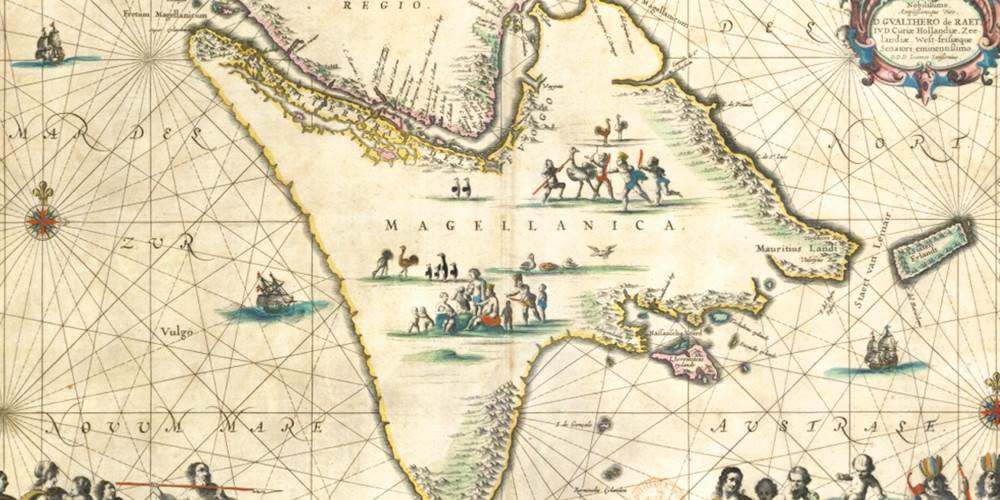
Détroit de Magellan
La Terre de Feu et le détroit de Magellan font partie, dans les atlas hollandais, des hauts lieux de la cartographie.
En s’engageant dans le dangereux détroit, long de 600 kilomètres environ, les membres de l’expédition constatèrent que la côte sud s’éclairait de temps à autre de foyers que les indigènes allumaient pour se chauffer, d’où le nom de « Tierra del Fuego », Terre de Feu, qu’ils lui donnèrent. Le dernier cap fut doublé au bout de vingt et un jours de navigation et baptisé « Deseado » (le Désiré). Les tempêtes s’étaient évanouies, le temps devenait radieux. Poussé par une brise régulière, Magellan, qui bénéficiait sans le savoir de conditions météorologiques exceptionnellement favorables, baptisa le nouvel océan « Mar Pacifico ».
Le plus pénible était encore à venir. Les voyageurs ne disposaient plus que du tiers de leurs vivres, et il restait 20 000 kilomètres à parcourir, trois fois plus qu’ils ne le pensaient. L’étendue réelle du Pacifique fut en effet pour Magellan une horrible déconvenue. Plus que l’emplacement du passage, elle fut sa grande découverte.
Nous restâmes trois mois et vingt jours sans avoir aucune nourriture fraîche, nous nourrissant uniquement de vieux biscuits réduits en poussière, grouillants de vermine et imprégnés de l’urine des rats.
Les marins souffraient évidemment du scorbut, qui résultait des carences alimentaires entraînées par les longues traversées, et plus particulièrement du manque de vitamine C. La « peste de mer » fragilisait les parois des vaisseaux sanguins, transformant les hommes en moribonds sanguinolents, dont les dents se déchaussaient. Elle s’ajoutait aux fièvres, à la dysenterie, aux dermatoses suintantes, aux parasites, à l’humidité permanente des vêtements et des entreponts, aux maladies tropicales. On considère que, jusqu’à la fin du XVI e siècle, un quart des équipages au long cours était ainsi condamné à l’avance.
Couvrant chaque jour une soixantaine de lieues, mesurées au loch, Magellan avait parcouru 4 000 lieues dans le Pacifique lorsqu’il aperçut deux îlots déserts dans des eaux infestées de requins qui le dissuadèrent d’approcher. Pour cette raison, ces îles furent nommées « Infortunées ».

Fernand de Magellan
Bibliothèque nationale de France / Société de géographie

Le cap « Deseado » qui marque l’entrée dans le Pacifique
Cette petite vue, le nord en bas, illustre la mémorable navigation de Magellan dans le détroit qui portera son nom. L’auteur, compagnon de Magellan, est un des rares survivants du premier tour du monde entrepris afin de trouver une nouvelle route maritime vers l’archipel des Moluques. Son récit fut diffusé peu après son retour, en 1522, sous forme de manuscrits soignés illustrés de cartes sommaires des îles nouvelles.
Comme on peut le voir sur la carte de son voyage tracée par l’Italien Battista Agnese, Magellan, au sortir du détroit, n’avait pas pris directement le cap des Moluques. Il était remonté au nord avant d’obliquer vers l’ouest, peut-être pour rechercher de nouvelles îles aux épices, mais, plus sûrement, pour trouver des alizés portants, avec cet instinct des vents qui caractérise les grands navigateurs. Cet itinéraire est aujourd’hui encore celui qu’utilise le plus souvent la navigation de plaisance.
En mars 1521, la flottille jeta l’ancre près d’un petit archipel qui reçut le nom d’îles des Larrons, car les indigènes subtilisèrent aux voyageurs quantité d’objets et même une chaloupe. Il s’agissait de Guam, dans les actuelles îles Mariannes. Les malades supplièrent Magellan, s’il tuait quelque voleur, de leur en rapporter les intestins, pensant que c’était le meilleur des remèdes à leurs maux.
Une semaine plus tard, ils atteignaient les futures Philippines où Magellan commit une imprudence qui lui coûta la vie. Engagé aux côtés d’un petit roi local dans un combat contre une tribu rivale, il succomba sous les flèches empoisonnées, les lances et les cimeterres des indigènes. Dans un passage émouvant, Pigafetta raconte comment il se sacrifia pour couvrir la retraite de ses hommes. L’expédition, dont il ne restait qu’un seul navire, erra six mois parmi les îles jusqu’à ce que le Basque Juan Sebastian El Cano la prenne en charge et la ramène à son point de départ.

Le retour par Juan Sebastian El Cano
Une autre longue et éprouvante croisière attendait les survivants épuisés et malades. Aux épreuves habituelles, la faim, la soif et le scorbut, vint s’ajouter l’hostilité des Portugais lors d’une escale forcée aux îles du Cap-Vert. Pour échapper à leur poursuite, El Cano dut jeter à la mer deux cents quintaux de girofle, une véritable fortune.
Une anecdote citée par Pigafetta a probablement inspiré jules Verne. Aux Espagnols qui avaient demandé quel était le jour de la semaine, les Portugais répondirent « que c’était jeudi, ce dont ils furent ébahis parce que pour nous c’était mercredi et nous ne savions pas comment nous nous étions trompés, car, moi, qui étais toujours sain, j’avais écrit chaque jour sans aucune interruption. Mais comme il nous fut dit depuis, il n’y avait pas d’erreur, car nous avions toujours fait notre voyage vers l’Occident comme fait le soleil ». Phileas Fog, au contraire, gagnera un jour, car il voyagera cap à l’Est.
Le 8 septembre 1522, trois ans moins douze jours après leur appareillage, dix-huit Européens et quatre Malais étaient de retour à Séville. « Personne, à la vérité, je crois, n’entreprendra jamais plus un tel voyage » écrivit Pigafetta. Effectivement, il faudra attendre Francis Drake, pour voir l’exploit renouvelé, de 1577 à 1581, pour le compte de l’Angleterre, attirée, elle aussi, par les îles aux épices. Préparée dans le plus grand secret, sa traversée du Pacifique ne durera que quatre-vingt-neuf jours.
El Cano rapportait à Charles Quint la preuve cartographique – partiale – que les Moluques se trouvaient dans la « moitié espagnole » du monde. Il avait, disait-il, « trouvé le camphre, la cannelle et les perles » et avait conclu des accords commerciaux avec les rois et seigneurs de ces îles. Il avait aussi rapporté dans ses cales 533 quintaux de girofle qui laissèrent aux commanditaires qui n’y comptaient plus un joli bénéfice. Anobli par Charles Quint, il introduira dans ses armoiries deux bâtons de cannelle, trois noix de muscade et trois clous de girofle.
Fragile succès, maigres preuves. Les Portugais contestaient la possession des Moluques par l’Espagne. La question du partage du monde allait rester d’actualité pendant quelques années encore.
Lien permanent
ark:/12148/mmxpbpbwhs4z
- 16 e siècle
Sur le même sujet
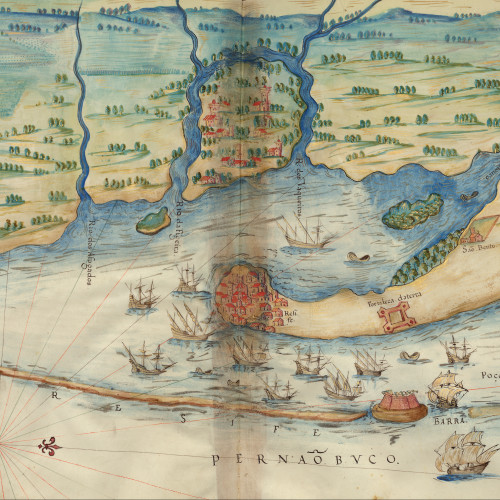
La cartographie ibérique

Dire straits: the story of Ferdinand Magellan's fatal voyage of discovery
The renegade Portuguese explorer Ferdinand Magellan masterminded a Spanish expedition that completed the first circuit of Earth, although it cost him his life. Writing for BBC History Revealed , Pat Kinsella tells the story and timeline of a triumph beset by mutiny, malnutrition and disaster

- Share on facebook
- Share on twitter
- Share on whatsapp
- Email to a friend
If all had gone to plan during Ferdinand Magellan’s life-defining expedition, almost no one would know his name now. As it happened, everything went disastrously wrong for the Portuguese sea captain, yet he has gone down in history as the first explorer to circumnavigate the planet, even though he died in the middle of the journey.
Magellan did, however, become the first European to lead a voyage into the Pacific Ocean – although future sailors would regularly raise alarmed eyebrows at the name he bequeathed to it. The expedition he led (or at least one of the five ships that set out from Spain in 1519) performed the first known complete loop of the globe.
Although Magellan could never have predicted the extraordinary events that would follow, perhaps the thought of reputational immortality would have provided the 41-year-old with a crumb of comfort on 27 April 1521, as he floundered in the shallows of a beach on the island of Mactan in the Philippines, mortally injured and weighed down by his armour. He had been identified as the leader of the invading alien force by the enraged warriors of island chief Lapu-Lapu, and was about to suffer a pointless and wholly avoidable death after his ill-advised show of military might spectacularly backfired.
- A voyage from hell: how Magellan’s circumnavigation of the world changed history
Magellan’s final moments were frenzied and violent. But if he hadn’t made the fateful decision to lead a small force against a defending army of 1,500 battle-ready men, then perhaps he wouldn’t have been remembered as one of the greatest explorers of his era.
Who was Ferdinand Magellan?
Born into an aristocratic Portuguese family in 1480, Ferdinand Magellan was orphaned as a young boy and at the age of 12 he entered the royal court in Lisbon as a page of Eleanor of Viseu, consort of King John II. Thirteen years later, he enlisted in the fleet of the Portuguese viceroy to the Indies and spent seven years learning the ropes of his future career during action-packed voyages in Asia and Africa.
More like this
Magellan was part of the invading force that saw Portugal secure control of the region’s most important trading routes when it conquered Malacca on the Malay Peninsula in 1511, and he may have ventured as far east as the Moluccas (Spice Islands) of modern-day Indonesia. During these adventures he bought a Malay-speaking man, Enrique de Malacca, to be his slave, interpreter and companion – and he remained so on all Magellan’s later voyages.

By 1512, Magellan was back in Lisbon with a promising-looking career ahead of him. He soon joined the huge expeditionary force of 500 ships and 15,000 soldiers that John II’s successor, King Manuel I, sent to punish the governor of Morocco for failing to pay his tribute to the Portuguese crown in 1513. It was during a skirmish that he sustained an injury that left him with a lifelong limp. But he was then accused of illegal trading with the Moors, which saw him fall from favour.
A dedicated student of maps and charts, consumed with an urge to explore, Magellan had hatched a plan to pioneer a westward route to the Spice Islands, avoiding the perilous route around the Cape of Good Hope. However, the 1494 Treaty of Tordesillas and the expeditions and achievements of explorers such as Vasco da Gama had already granted Portugal full control of the eastwards route around southern Africa, and Manuel was disinterested in Magellan’s ideas.
Great reputations
Listen to all episodes now.

This snub left the ambitious and capable captain dangerously disaffected – a blessing for the Spanish, who were desperately seeking an alternative way of accessing the riches of India and the Far East. In 1517, Magellan decamped to Seville in Spain, where he quickly married the daughter of another Portuguese exile, had two children and began bending the ear of Charles I about a western route to the Spice Islands.
The 18-year-old Spanish king – grandson of King Ferdinand and Queen Isabella, who had commissioned the adventures of Columbus – was desperate to make his mark and smash the dominance his Iberian rivals had over the enormously lucrative spice trade. He seized the potential opportunity to bypass Africa, while avoiding breaking the terms of the treaty with the powerful Portuguese, and commissioned Magellan to undertake the expeditionary mission he had been itching to pursue.
Of course, Magellan wasn’t the first European explorer to sail west in search of a backdoor route to the treasures of the Orient. Columbus had ventured that way across the Atlantic looking for the East Indies in 1492, before bumping into the Bahamas instead, while John Cabot (aka Giovanni Caboto), a Venetian captain commissioned by Henry VII of England, had sailed from Bristol to Newfoundland in 1497.
- Ptolemy's maps: the father of modern Geography
Unlike Columbus – who made a further three journeys across the western ocean, but died in denial that he was actually exploring a totally new continent – the Spanish soon realised this was a different land mass (the Americas). While this revelation would ultimately return riches beyond their wildest dreams in terms of gold, Magellan’s focus was on how to get past this ‘New World’ in order to reach the Spice Islands beyond.
No European had sailed around Cape Horn – or indeed even laid eyes on it – but a Spanish adventurer named Vasco Núñez de Balboa had discovered the ocean beyond the New World in 1513, by traversing the Isthmus of Panama. Magellan, a visionary who was working with the most advanced cartographers and cosmographers of the era, was convinced there was a way of getting around the Americas.
Westward ho
In September 1519, Magellan led five vessels, manned by a multinational, 270-strong crew, into the Atlantic – his flagship the Trinidad, plus the Santiago , San Antonio , Concepción and Victoria . Word of his mission reached Manuel I, who jealously dispatched a Portuguese naval detachment to follow the expedition, but Magellan outran them.
But he couldn’t escape all his enemies so easily, especially as some were among his own men. Many of the Spanish sailors in the expeditionary party were suspicious of their Portuguese commander. Some of his crew were criminals released from prison in return for undertaking the dangerous voyage. Others joined just because they were avoiding creditors.
Many of the Spanish sailors were suspicious of their commander
The fleet was hit by a storm, which caused a delay and resulted in food rationing. Here, Juan de Cartagena – who had been appointed captain of the largest ship, the San Antonio , because of his good connections, despite being green in the business of exploration and an inexperienced seaman – began openly criticising Magellan’s competence and refusing to salute his captain-general. Magellan had Cartagena arrested, relieved of his command and imprisoned in the brig of the Victoria until they reached South America. The incident was a precursor to the much more dramatic and bloody events to come.
In December, the expedition reached South America and made landfall in Rio de Janeiro. For two weeks they interacted with indigenous people, trading trinkets for food and sexual favours, before the fleet sailed south, scouring the coastline in search of an opening. They spent fruitless weeks exploring the estuary of Río de la Plata for this elusive passage, before freezing conditions forced the party to seek shelter for the winter in Port St Julian in Patagonia.
Timeline: Ferdinand Magellan's voyage
Ten landmark moments in magellan’s voyage into the unknown, as plotted out on a 1544 copy of the agnese atlas, produced by the italian mapmaker battista agnese.
Morale was already plummeting when, in April 1520, Cartagena made his move. He escaped Victoria , reboarded the San Antonio , and begun fermenting trouble and securing support from the Spanish crew and officers, playing on bad blood about Magellan’s Portuguese nationality.
In the mutiny that followed, the San Antonio was declared independent of Magellan’s command. The captains of the Concepción and the Victoria (Gaspar de Quesada and Luiz Mendoza) joined them, as did the Victoria ’s pilot Juan Sebastián Elcano, and many of the officers and crew. A letter was sent to Magellan on the Trinidad, demanding he acknowledge that the fleet was no longer under his command.
Magellan sent his reply in the hands of an assassin
Magellan coolly sent his reply back in the hands of an assassin. After coming alongside the Victoria in a small boat, while pretending to hand over the letter to Mendoza, the man fatally stabbed the errant captain instead. Simultaneously, crew loyal to Magellan stormed aboard the ship and attacked the mutineers, who were overcome.
The rebels maintained control of the San Antonio and Concepción , with Cartagena having boarded the latter prior to the fighting breaking out. Magellan positioned the three ships he had at his disposal across the mouth of the bay, and prepared for combat.
During the night, heavy winds caused San Antonio to drag its anchor and drift towards the Trinidad. Magellan met the oncoming ship with a cannon broadside, causing the mutineers aboard the stricken carrack to surrender. Conceding defeat, Cartagena followed suit and gave up the Concepción without resistance the following morning.
Having quelled the revolt, Magellan immediately sentenced 30 men to death, but then (mindful of his threadbare resources) commuted their punishment to hard labour. The leaders of the mutiny weren’t so lucky. Quesada was beheaded for treason, and both his body and that of Mendoza’s were mutilated and put on sticks. Too fearful of Cartagena’s connections to order him executed, Magellan instead left him marooned with Padre Sánchez de la Reina, a priest who’d supported the mutineers. They were never heard of again.
The real deal
Back on course.
In July, Magellan dispatched the Santiago to scout ahead for the elusive passage. She discovered the Rio de Santa Cruz in what is now Argentina, but sank in a storm while trying to make the return journey. Remarkably, the crew survived, and two men trekked overland for 11 days to alert Magellan, who mounted a rescue mission.
In October, the entire fleet set off, and Magellan at last sighted the strait that now bears his name, a route between the tip of mainland South America and the Tierra del Fuego archipelago. However, conditions continued to be rough, and when the fleet split to explore either side of an island, the crew of the San Antonio forced their captain to desert and return to Spain (where they spread scurrilous rumours about Magellan’s brutality to avoid punishment).
While the main fleet waited in vain for the San Antonio , Gonzalo de Espinosa led an advance party along the strait, returning after six days with news that made Magellan weep with joy: they’d sighted open ocean. On 28 November, the expedition emerged into an ocean that seemed so relatively benign on the day, Magellan named it Mar Pacifico, or Peaceful Sea.
The true nature and enormity of the Pacific was soon revealed to the explorer, however. !e fleet left the coast of Chile to sail across the new-found ocean, a journey Magellan expected to last four days, but which took almost four months. The fleet was woefully underprepared and the sailors savaged by scurvy and thirst, many dying.
- Mutiny at sea: the forgotten story of murder and brutality aboard HMS Wager
Magellan crossed the equator in February 1521 and reached the Pacific island of Guam in March, where the fleet replenished its exhausted supplies. Not long afterwards they finally arrived at the Philippine archipelago. This, though, was just the beginning of Magellan’s real troubles; his erstwhile planning and leadership came dramatically undone when he needlessly embroiled himself in a dispute between two local chiefs.
In the Philippines, Magellan communicated with local rajahs through his Malay slave, Enrique. At the evangelical explorer’s behest, a number of island chiefs – including Cebu’s Rajah Humabon – converted to Christianity.
In return for his soul, however, Humabon sought Magellan’s support in a disagreement with a neighbour, Lapu- Lapu, a chief on Mactan Island, who had already irked the explorer by declining to convert or bow to the Spanish crown.
On 27 April 1521, 60 heavily armed Europeans accompanied a fleet of Filipino boats to Mactan, where Lapu- Lapu again refused to recognise the authority of Humabon or the Spanish. Facing 1,500 warriors, Magellan – confident in the shock-and-awe capability of his superior weaponry, which included guns, crossbows, swords and axes – instructed Humabon to hang back, while he waded ashore with an attack party of 49 men.
They torched several houses in an attempt to scare the islanders, but this only served to whip Lapu-Lapu’s warriors into a battle rage. In the resulting beachfront mêlée, where the Europeans were weighed down by their armour, Magellan was identified and injured by a bamboo spear thrust. Felled, he was then surrounded and killed, along with several others. With their captain dead, the survivors retreated to the boats.
After the battle, when the Europeans refused to release Enrique (despite Magellan’s orders to do so in the event of his death), Humabon turned against the Spanish. Several were poisoned during a feast, including Duarte Barbosa and João Serrão, who had assumed leadership of the expedition following the demise of Magellan.
Rounding the circle
João Carvalho took command of the fleet and ordered an immediate departure. By this time, however, too few men remained to crew the three ships. The Concepción was burnt, and the two remaining vessels made for Brunei, indulging in a spot of piracy en route, and attacking a junk bound for China. Espinosa then replaced Carvalho as leader, as well as being captain of the Trinidad , while Elcano was made the captain of the Victoria .
In November, the expedition finally reached the Spice Islands and managed to trade with the Sultan of Tidore. Loaded with cloves, they attempted to return home by sailing west across the Indian Ocean – which had never been Magellan’s intention – until the Trinidad started leaking. The wounded ship stopped for repairs, and eventually tried to return via the Pacific, but was captured by the Portuguese and subsequently sank.
Meanwhile, under the captaincy of Elcano, the Victoria continued across the Indian Ocean, eventually limping around the Cape of Good Hope in May. Tragically, 20 men starved on the last leg along the Atlantic coast of Africa, and another 13 were abandoned on Cape Verde – Elcano had put into port to resupply, but the Portuguese there caught on that they were part of a Spanish expedition; fearing for his cargo, Elcano fled.
On 6 September 1522, after three years’ absence, Victoria arrived in Spain, becoming the first ship to have sailed around the planet. Only 18 of Magellan’s original 270-man crew arrived with her. Though ultimately successful in finding a western passage that opened up the Pacific and the west coast of the Americas, the Strait of Magellan proved too far south to be a viable trade route to the Orient, which intensified the search for the elusive Northwest Passage from the mid-16th century.
Although Magellan didn’t make it home, he did complete a full circumnavigation of the globe (Philippines to Philippines, albeit in two chunks separated by several years), a feat probably matched by his Malaysian slave Enrique. But the first European to definitively do so in a single voyage was the man who captained Victoria on her final leg – the mutineer Elcano.
Drake's fortune
Pat Kinsella specialises in adventure journalism as a writer, photographer and editor
This article was first published in the September 2019 issue of BBC History Revealed

Receive a Hardback copy of Populus by Guy de la Bédoyère when you subscribe for £24.99 every 6 issues.
- I ncludes a signed bookplate from the author
+ FREE HistoryExtra membership - worth £34.99!
Sign up for the weekly HistoryExtra newsletter
Sign up to receive our newsletter!
By entering your details, you are agreeing to our terms and conditions and privacy policy . You can unsubscribe at any time.

JUMP into SPRING! Get your first 6 issues for
+ FREE HistoryExtra membership (special offers) - worth £34.99!

USA Subscription offer!
Save 76% on the shop price when you subscribe today - Get 13 issues for just $45 + FREE access to HistoryExtra.com

HistoryExtra podcast
Listen to the latest episodes now

L'incroyable périple de Magellan - Le partage du Monde
Episode 1/4
Description
En 1519, entré au service du roi d’Espagne, le navigateur portugais Fernand de Magellan dirige la flotte qui bouclera, sans l’avoir décidé au départ, le premier tour du monde maritime de l’histoire.
Issu de la petite noblesse du nord du Portugal, Fernand de Magellan serait né vers 1480. Après avoir été page à la cour de la reine consort Éléonore de Viseu, il embarque à 25 ans sur la flotte de Francisco de Almeida, vice-roi des Indes portugaises chargé de l'expansion du commerce dans l'océan Indien. Les expéditions auxquelles il participe s’accompagnent de combats au cours desquels il fait preuve de hardiesse et de courage. Manuel I er , roi du Portugal, ayant refusé à plusieurs reprises d’augmenter sa pension, il se résout à proposer ses services à l’Espagne. Les deux nations, qui se sont partagé le monde en 1494 par le traité de Tordesillas, se livrent alors une guerre farouche sur les mers du globe, chacune voulant accaparer les richesses des terres lointaines. En 1518, Magellan se rend à Valladolid pour convaincre le jeune roi Charles I er , futur Charles Quint, de financer son projet. Il veut trouver un passage pour franchir le rempart de l’Amérique au-delà des côtes brésiliennes, où nul ne s’est encore aventuré, traverser le Pacifique et rapporter des îles Moluques, dans l’archipel indonésien, une épice valant autant que l’or : le clou de girofle.
La Série : On connaît tous le nom de Magellan mais ses exploits sont tombés dans l’oubli car Magellan est un héros maudit… un Portugais au service de l’Espagne… un traitre qui n’est jamais revenu de son expédition insensée… pourtant… c’est lui qui a réalisé le rêve de Christophe Colomb et sa route a été bien plus longue et bien plus terrifiante.
Fiche technique et artistique
- Réalisateur : François de Riberolles
- Producteurs : Camera Lucida, ARTE France, Minima Films, Belgica Films, Serena Productions
- Année : 2022
- Nationalité : France
Versions disponibles
Français, Allemand
Transcription
Épisodes de la série.

L'Incroyable périple de Magellan - Voyage au bord du monde

L'Incroyable périple de Magellan - Le royaume de Magellan

L'Incroyable périple de Magellan - Le premier tour du monde
Accompagnements pédagogiques, 2 dossiers thématiques.
Dossier thématique
L'aventure c'est l'aventure !

Colonisations et Décolonisations
Pour aller plus loin.

Les colonies - À quand remonte le début des empires coloniaux ?

Exterminez toutes ces brutes - P***** de Christophe Colomb

Quand l'histoire fait dates - 1492 - Un nouveau monde

L'incroyable périple de Magellan - Tous les épisodes

Les colonies - Tous les épisodes

Exterminez toutes ces brutes - Tous les épisodes
- Corrections
Ferdinand Magellan & The First Voyage Around the World
During the Age of Exploration, one task was particularly noteworthy: the circumnavigation of Earth. Discover the life of Ferdinand Magellan and the first voyage around the world.

The Age of Exploration saw the achievement of incredible feats with the voyages of European expeditions. Perhaps the most famous of them all is the arrival of Christopher Columbus to the Americas, but many other expeditions are equally groundbreaking. Besides making contact with a “new continent,” the circumnavigation of the Earth was seen as an enormous feat. With Columbus’ travels and following expeditions by other explorers, the circumnavigation of the world was believed possible, but who would be first? Europe’s major powers put their efforts into completing the task, but one expedition, led by Ferdinand Magellan, a Portuguese explorer serving the Spanish crown, would ultimately be successful: the Magellan expedition.
Magellan’s Early Life & First Travels

Magellan was born in the north of Portugal in 1480. His family was of noble origin and enjoyed a minor presence yet sufficient status among the higher classes of the Kingdom of Portugal. His father, Rui Magellan, was the mayor of a small town. Ferdinand served as a page to Queen Eleanor, consort of John II of the Portuguese crown. After the death of John, Magellan served under Manuel I. When Magellan was 25, he joined a Portuguese expedition to India, where they would establish Francisco de Almeida as the first viceroy of Portuguese India. Magellan stayed in India for almost a decade; then, he traveled to Malacca, where, in 1511, the Portuguese conquered the city under the governor Alfonso de Albuquerque.
Magellan received great riches and promotions from his participation in the conquest of Malacca. He received a slave, baptized under the name Enrique of Malacca, who would join Magellan through many of his travels and endeavors. Magellan’s behavior became increasingly rebellious and not in tune with the Portuguese authorities’ expectations. He took leave without permission, was accused of illegally trading in Morocco, and even quarreled with the Portuguese King Manuel I.
Magellan dedicated himself to studying the most recent nautical charts available to him. He investigated, alongside cosmographer Rui Faleiro, the possibility of reaching the Moluccas through a gateway from the Atlantic to the South Pacific in the Americas. While in Malacca, Magellan befriended the navigator Francisco Serrao, who reached and stayed in the Spice Islands (the Moluccas). His letters to Magellan would prove very useful for his consequent travels to the Islands.
Magellan the Spanish Explorer: Pledging Loyalty to the Opposing Crown

Get the latest articles delivered to your inbox
Please check your inbox to activate your subscription.
When Magellan fell out of favor with the Portuguese King, he turned to the Spanish crown. Magellan had been refused time and time again an expedition made possible by the Portuguese crown. King Manuel I disapproved of Magellan’s planned expedition. Thus, Magellan renounced his Portuguese nationality and proposed his travel expedition to King Charles I of Spain (Charles V as Holy Roman Emperor ).
At the time of Magellan’s proposed expedition, Spain was at the start of its expansion into other continents, mainly the Americas, which would be decisive for the Spanish to consolidate their empire.
Portugal had a similar situation. The Portuguese Empire had explored most of the coasts of Africa, reached the Indies through said passage, and established colonies all throughout Africa and Asia.
However, both Iberian empires had become rivals whose differences were often solved only through external intervention. The Treaty of Tordesillas of 1494 established a division of lands outside of Europe between Spain and Portugal. The treaty was largely left unsettled, but in 1529, the Treaty of Zaragoza clarified and formalized the divisions. Before its formalization, however, Magellan and his fleet would achieve the first circumnavigation of the Earth, arguably abusing the agreement set in the Tordesillas treaty.
Magellan convinced the Spanish king that his expedition would not be opposed to the agreement between Spain and Portugal; thus, he was allowed to sail. King Manuel I was greatly insulted by Magellan’s expedition and work under the Spanish crown. The preparations of the Spanish fleet were disrupted by the Portuguese, and a fleet was sent after Magellan, though it failed to capture him.
Expedition through the Atlantic & Reaching the Americas

Magellan and his fleet left Spain from the port of Seville in 1519. The fleet traveled through the Guadalquivir River until they reached the Atlantic through the port of Sanlucar de Barrameda. The fleet remained in place for weeks, going back and forth from Seville to solve unforeseen difficulties. More than a month later, they departed. The fleet reached the Canary Islands, then passed next to Cape Verde and the coasts of Sierra Leone. Four months went by before the fleet reached the coasts of the Americas.
In December 1519, Magellan and his fleet touched land in what is now Rio de Janeiro. They traveled through the estuary of the Rio de la Plata River, then reached and named the region of Patagonia . In Patagonia, the Spaniards met local Indigenous people for the first time. After making contact and trading with them, the Spanish kidnapped some to bring them back for the king. Unfortunately, the kidnapped Indigenous people didn’t survive.
In March 1520, the fleet found itself in harsh conditions. They took refuge in the port of San Julian, but after considering the expedition had failed, some of the crew attempted to overthrow Magellan as their leader. The insurrection ultimately failed; the leaders of the unsatisfied crew were killed or banished, and Magellan forgave the rest as he needed them to continue. Later, the crew of one of the five ships, San Antonio , once again rose against Magellan and turned back for Spain.
The Strait of Magellan & the Voyage in the Pacific

After facing difficulties finding a passage to the Pacific Ocean (known to them as Mar del Sur ), the fleet reached the Strait of Magellan. Magellan originally named it the Strait of All Saints ( estrecho de Todos los Santos ), but the strait gained its name in honor of Magellan and his expedition, having been the first European explorer to find the strait.
Known to be a harsh place, the Strait of Magellan was challenging to pass through. The Spaniards saw bonfires lit by the natives and thus named the territory “ Tierra del Fuego ” (Land of Fire). Indigenous people lived or had reached as far down as Antarctica . The ocean known to them as Mar del Sur was then baptized the Pacific Ocean for its tranquil waters. For three months, after passing through the strait, the fleet was unable to reach land and disembark. The conditions aboard were challenging, to say the least.
The difficulties during the voyage in the Pacific decreased once the fleet reached the Mariana Islands . The state of the fleet was in tatters, having barely survived over three months without touching land. They then reached the Philippines, becoming the first Europeans to do so. Magellan and his fleet carried out the conversion of the local islanders to Catholicism. Magellan won over the locals by proving his strength and urging them to convert so that they could become like them. Thus, the fleet remained in the region before continuing to the Moluccas.
The Battle of Mactan, Magellan’s Death, & the First Circumnavigation of the World

In the Philippines, the locals were manipulated into converting to Catholicism, but when attempting to form an alliance with one chieftain, Magellan proposed to battle an opposing leader to win over his potential ally. Magellan and his fleet went to the Island of Mactan to fight, convert, and make the chieftain Lapulapu submit to the Spanish crown. The battle was a decisive defeat for the Spanish, who were unprepared and outnumbered. Magellan himself was killed during combat. After Magellan’s death, the expedition under his command had to choose a new leader.
The expedition chose Magellan’s brother-in-law and Juan Serrano as co-commanders, but their leadership would be short-lived. On the first of May, the Spanish disembarked to join the Cebuanos for a feast, yet once the meal was finished, they were surprised and murdered by the Cebuanos. The Spaniards had been betrayed by Magellan’s slave Enrique, who was supposed to be freed after his master’s death but was forced to continue working as an interpreter for them. Enrique made a deal with the island’s leader, Humabon, in order to regain his freedom.

With both co-commanders murdered, Juan Lopez de Carvalho was named captain. The fleet chose to continue with just two ships: Trinidad and Victoria . Carvalho was deemed unable to command, and Gonzalo Gomez de Espinosa was chosen as the new captain, leading the ship Trinidad . Meanwhile, Juan Sebastian Elcano was to captain the ship Victoria . When the fleet reached the Moluccas, it was decided that they should leave for Spain at once, yet the Trinidad was in no shape for that sort of travel, so only the Victoria would continue, and the Trinidad would follow later. Elcano and his ship circumnavigated the African continent for their return, and in September 1522, they reached Spain, completing the first circumnavigation of the world .

5 Things Marco Polo Discovered on His Travels

By Francisco Perpuli BA History (in progress) Francisco is completing a History degree at the University of Guadalajara. He has a keen interest in the study of culture and the arts. In his spare time, he tries to explore and develop other interests while saving up to travel the world.

Frequently Read Together

The Holy Roman Empire in 3 Key Leaders

Modern Argentina: A Struggle for Independence from Spanish Colonization

Polynesians in Antarctica: Were They the First?
A Decrease font size. A Reset font size. A Increase font size.

- Guide de voyage
- Personnalités historiques
Fernand de Magellan, l’explorateur du bout du monde

Ce navigateur portugais est entré dans la postérité grâce à son projet de tour du monde auquel il ne survivra pas, mais qui lui permettra de donner son nom au célèbre détroit qui sépare la pointe sud du continent américain et la Terre de Feu.

Né vers 1480, à l’aube de la découverte du Nouveau Monde , Fernand de Magellan est issu d’une famille de petite noblesse portugaise . À l’âge de 12 ans, il part pour Lisbonne afin d’être serviteur dans la maison royale, se dévouant d’abord la reine puis à Manuel Ier du Portugal. L’excellente éducation en mathématiques , en astronomie , en navigation qu’il reçoit à la cour, lui permet de devenir un navigateur hors pair en confrontant ses savoirs à l’expérience de la navigation lors d’e xpéditions en Afrique et dans les Indes Orientales au sein de l’armée portugaise.

En 1517, suite aux refus du tribunal de faire avancer sa carrière en justifiant de supposés pillages auxquels il aurait pris part au Maroc, il décide de changer d’allégeance pour l’Espagne . Quelle qu’en soit la raison véritable, c’est au service de Charles Ier d’Espagne qu’il se fait connaître afin de promouvoir son projet de tour du monde par l’ouest . Outre les honneurs et le prestige qu’elle donne à la couronne d’Espagne, cette expédition est l’opportunité de découvrir la route occidentale vers les îles des Épices . Le futur Charles Quint voit cette proposition d’un œil favorable et met à disposition de Magellan, cinq navires : le Trinidad, le San Antonio, le Concepción, le Victoria et le Santiago. Si la majeure partie de l’équipage est d’origine espagnole ou portugaise, on y trouve aussi des Français, des Vénitiens et des Grecs qui font de ce voyage une expédition européenne .

Dès les premiers mois après le départ de Séville en 1519, de nombreux marins expriment de plus en plus de réticences à l’idée de rejoindre l’océan Pacifique. En Patagonie , en début d’année 1520, les mécontentements prennent la forme de la mutinerie de Pâques sous la conduite du second commandant de l’expédition, l’Espagnol Juan de Cartegena . Il doute en effet de l’existence d’un passage vers l’ouest et surtout de leurs chances de survie dans ces régions froides et désertiques. Fernand de Magellan la surmonte avec de lourdes conséquences. Plusieurs meurent pendant le soulèvement, d’autres sont abandonnés sur les côtes d’Argentine , certains encore sont condamnés puis graciés afin que l’expédition puisse continuer. Alors sur le point de découvrir le passage entre l’océan Atlantique et Pacifique, l’expédition perd tour à tour le Santiago qui s’échoue près des côtes argentines et le San Antonio qui déserte le reste de la flotte.

Après plusieurs semaines passées dans les eaux du détroit nommé d’abord « chenal de Tous-les-Saints », puis rebaptisé Magellan , qui sépare le continent de l’actuelle Terre de Feu , l’expédition découvre les côtes ouest de l’actuel Chili . Puis se poursuit l’exploration à travers la mer sud que Magellan nomme le Pacifique pour les eaux paisibles. Si la flotte est préservée du froid glacial de Patagonie et des terribles tempêtes du Pacifique, Magellan et son équipage souffrent néanmoins d’un manque de provisions et doivent rapidement se contenter d’eau non potable, de rats, de chats et de carrés de cuir décousus des voiles. Au bout de 4 mois, ils atteignent enfin les îles des Philippines avec leurs épices, leurs oiseaux multicolores et leurs paysages idylliques. En contexte, les européens tranquant pour les tuer ou les réduire en esclavage tous les peuples autochtones du continent, ceux-ci percoivent comme un danger l’arrivée de ce navire sur leurs terres. Lors d’une bataille opposant l’équipage aux indigènes de l’île de Mactan, Fernand de Magellan meurt en 1521 . C’est le commandant Juan Sebastián Elcano qui achève ce premier tour du monde avec à son bord une vingtaine de survivants. À leur retour, les quelques rescapés de ce périple extraordinaire font parler d’eux dans toutes les Cours européennes. Quant à Fernand de Magellan, s’il est celui qui initie cette expédition et découvre le détroit entre l’Atlantique et le Pacifique, il tombe peu à peu dans l’oubli . Il faut attendre la biographie par Stefan Zweig en 1938 pour qu’il entre au panthéon populaire des grands personnages de l’histoire universelle de l’humanité .

Que visiter dans chaque région
- Désert d’Atacama
- San Pedro de Atacama
- Humberstone et Santa Laura
- Vallée de l’Elqui
- Île de Pâques
- Îles Crusoé
- Viña del Mar
- Malalcahuello
- Puerto Varas
- Île de Chiloé
- Églises de Chiloé
- Puerto Montt
- Parc Torres del Paine
- Puerto Natales
- Punta Arenas
- Antarctique
- Région Salar d’Uyuni et Lipez
- Quand Partir au Chili
- Tout Savoir sur le Chili
- Cartes du Chili

PLUS D'INFO SUR LE CHILI
Exemples de circuits, créez votre voyage sur mesure.
1) Remplissez notre formulaire et l'un de nos conseillers voyages prendra contact avec vous.
2) Grâce à notre connaissance du terrain nous vous proposons des circuits personnalisés et hors des chemins traditionnels.
3) Nous vous accueillons dès votre arrivée sur place.
4) Vous bénéficiez d'un suivi et d'une assistance 7j/7 et 24h/24 durant votre séjour.

Privacy Overview

IMAGES
VIDEO
COMMENTS
Relation du voyage de Magellan, le récit beaucoup plus complet d'Antonio Pigafetta, connaît un certain succès à sa publication en 1526. Magellan reste cependant calomnié par les survivants espagnols du périple, critiques de son commandement, et par le Portugal, qui le considère comme un traître.
Fernand de Magellan était un navigateur et explorateur Portugais de l'époque des Grandes découvertes. Son expédition fut la première à traverser l'océan Pacifique et à faire le tour du monde...
Fernand de Magellan (1480-1521) est un navigateur portugais, célèbre pour avoir réalisé la première circumnavigation : le premier voyage autour du monde. Après deux ans de préparation, il se...
Ferdinand Magellan, Portuguese navigator and explorer. From Spain he sailed around South America, discovering the Strait of Magellan, and across the Pacific. Though he was killed in the Philippines, one of his ships continued westward to Spain, accomplishing the first circumnavigation of Earth.
Updated: October 4, 2023 | Original: October 29, 2009. copy page link. Print Page. Fine Art Images/Heritage Images/Getty Images. In search of fame and fortune, Portuguese explorer Ferdinand...
Premier voyage. Goa, India. En mars 1505, à l'âge de 25 ans, Magellan s'enrôle dans la flotte de 22 navires envoyés pour accueillir Francisco de Almeida en tant que premier vice-roi de l'Inde portugaise .Bien que son nom n'apparaisse pas dans les chroniques, on sait qu'il y resta huit ans, à Goa, Cochin et Quilon.Il participa à plusieurs ...
Fernand de Magellan, ou Fernão de Magalhães (c. 1480-1521), était un marin portugais dont l'expédition fut la première à faire le tour du globe en 1519-1522 au service de l'Espagne. Magellan fut tué lors de ce voyage dans ce qui est aujourd'hui les Philippines, et seuls 22 des 270 membres d'équipage originaux rentrèrent en ...
Ferdinand Magellan (/ m ə ˈ ɡ ɛ l ə n / mə-GHEL-ən or / m ə ˈ dʒ ɛ l ə n / mə-JEL-ən; Portuguese: Fernão de Magalhães, IPA: [fɨɾˈnɐ̃w̃ dɨ mɐɡɐˈʎɐ̃j̃ʃ]; Spanish: Fernando de Magallanes, IPA: [feɾˈnando ðe maɣaˈjanes]; c. 1480 - 27 April 1521) was a Portuguese explorer best known for having planned and led the 1519 Spanish expedition to the East Indies ...
Ferdinand Magellan, or Fernão de Magalhães (c. 1480-1521), was a Portuguese mariner whose expedition was the first to circumnavigate the globe in 1519-22 in the service of Spain. Magellan was killed on the voyage in what is today the Philippines, and only 22 of the original 270 crew members made it back to Europe.
Voyages of Ferdinand Magellan (1519-22) and Francis Drake (1577-80) across the Atlantic Ocean and around the globe. (more) After Magellan's death only two of the ships, the Trinidad and the Victoria , reached the Moluccas .
The Magellan expedition, sometimes called the Magellan-Elcano expedition, was an early 16th-century Spanish expedition planned and led by Portuguese explorer Ferdinand Magellan with the objective of crossing the Atlantic and Pacific oceans in order to open a trade route with the Moluccas ("Spice islands").
Le 19 septembre 1519, cinq nefs prennent le départ depuis Sanlúcar de Barrameda, en Andalousie pour un voyage qui durera trois ans. Ironie du sort, et contrairement à ce que laisse croire la postérité de Magellan, ce dernier ne fera jamais le tour du monde...
Rounding Cape Frio, Magellan entered the bay of Rio de Janeiro on December 13. He then sailed south to the Río de la Plata and vainly probed the estuary, seeking the strait. On March 31, 1520, he reached Port Saint Julian (San Julián, Argentina), where on Easter day at midnight Spanish captains led a serious mutiny against the Portuguese commander.
Ferdinand Magellan was a Portuguese-born sailor who knew the Portuguese route to Africa and Asia, having sailed in the service of King Manuel I of Portugal for over 20 years. He wanted to begin a journey that would take a new route to the Moluccas (Spice Islands), but the idea did not get far at the Portuguese court. That is how he ended up in ...
1. Un navigateur portugais au service de l'Espagne. a. Une vie d'aventurier. Fernando Magellan est né en 1480. Il a participé à des expéditions aux Indes aux côtés du conquistador portugais d' Albuquerque. De retour en Europe, il repart aussitôt pour combattre au Maroc. b. Portugais au service de l'Espagne.
Introduction. Ferdinand Magellan is known for circumnavigating - sailing around - the world. From Spain he sailed around South America, discovering the Strait of Magellan, and across the Pacific. Though he was killed in the Philippines, his ship the Victoria continued westward to Spain, accomplishing the first circumnavigation of the globe.
13 min de lecture. Portraits de Magellan et de Schouten. © Bibliothèque nationale de France. Agrandir. Le plus audacieux de tous les voyages maritimes fut sans nul doute le premier voyage de circumnavigation du globe réalisé par Magellan dans des circonstances dramatiques. Fernao de Magalhaens avait des comptes à régler avec la société.
Tudor. Dire straits: the story of Ferdinand Magellan's fatal voyage of discovery. The renegade Portuguese explorer Ferdinand Magellan masterminded a Spanish expedition that completed the first circuit of Earth, although it cost him his life.
Ferdinand Magellan set off from Spain 500 years ago on an epoch-making voyage to sail all the way around the globe for the first time. The Portuguese explorer was killed by islanders in the...
Épisode 1. 52min. L'incroyable périple de Magellan - Le partage du Monde. Episode 1/4. Description. En 1519, entré au service du roi d'Espagne, le navigateur portugais Fernand de Magellan dirige la flotte qui bouclera, sans l'avoir décidé au départ, le premier tour du monde maritime de l'histoire.
The Odyssey Ends. September 6, 1522: Almost three years to the day after Magellan's fleet of five ships left Spain, Captain Elcano and the single remaining ship in his command arrives back in Sanlúcar de Barrameda. Only 18 of the original 270 crew survive the voyage. A simplified chronology of events of the first circumnavigation of the world.
Discover the life of Ferdinand Magellan and the first voyage around the world. The Age of Exploration saw the achievement of incredible feats with the voyages of European expeditions. Perhaps the most famous of them all is the arrival of Christopher Columbus to the Americas, but many other expeditions are equally groundbreaking.
Lors d'une bataille opposant l'équipage aux indigènes de l'île de Mactan, Fernand de Magellan meurt en 1521. C'est le commandant Juan Sebastián Elcano qui achève ce premier tour du monde avec à son bord une vingtaine de survivants. À leur retour, les quelques rescapés de ce périple extraordinaire font parler d'eux dans toutes ...